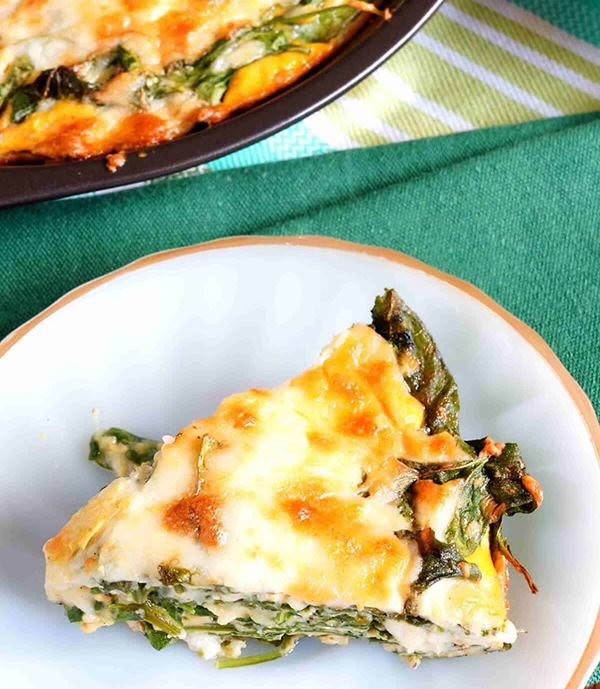The Keto lifestyle
Start your keto journey here with guidance, recipes and more.
🥑 🥩 🥦 🥓 🍳 🧈 🥥 🍓 🍖 🥒 🥜 🦪 🥗 🍗 🧀 🍤 🍋
People are generally motivated to go on the keto diet because of serious health issues and a desperate need to lose weight. My hope is that more people will decide to get healthy before it’s a dying need. Keto is known to have a significant positive effect on weight, inflammation, mood, skin, puffiness and bloating, stable energy, mental alertness, constant hunger, cravings, heartburn, allergic reaction, and snoring.
Whatever your reasons for being here, I hope to help you ask the right questions in an overall journey of getting healthier and becoming a better version of yourself. My hope is also to help you make small changes in your current lifestyle that will have a prolonged impact instead of just a month’s suffering with no lasting effect. 😁
Shortcut Links
keto basics | want to try keto? | keto effect | food choices | fats 101 | carbs 101 | stories | add-ons | more help | recipes
keto basics
In the journey of losing weight on keto, the added benefits are so great that even after the weight loss, people stay.
What is keto?
Keto (the ketogenic diet) is a high-fat, adequate-protein, low-carbohydrate diet, forcing your body to use (burn) fats rather than carbohydrates for energy.
Why keto?
If your pet has some sort of issue, the first thing the vet will ask is, what is he eating? If we go to the doctor he dares not tell us about what we’re eating, just fix the issue. I dare say we can fix our issues by the food choices we make.
Unfortunately, often times people only discover keto when they are in dying need of getting healthy or losing weight. People don’t truly realise what bad shape they are in because that’s all they know.
Some symptoms that a keto lifestyle can resolves are; tiredness after eating, inflammation, tiredness when waking up, bloating, stiff joints, constipation, headache, acne, moodiness, lack of concentration, severe hormonal symptoms, belly fat, and brain fog.
Cell science
If you would take a red blood cell from someone and look into the lining of it, you will find all the fats that the body consists of – the fats eaten, the produced fats and the transformed fats. This fat lining plays a very large role in the health of that blood cell, which in turn determines the health of the whole body.
Our red blood cells live 90-100 days (3 months). As cells die, new ones take their place.
A 90-year-old very “trans-fatty” cell is very sick, making the whole body sick, but it will soon die, and it is up to the person’s diet to determine the health of the new generation of cells. For example, if you should take a typical American, (high carb and high fat, plus all the baked goodies diet) you will see a body full of unhealthy red blood cells – an overall unhealthy person. If that American should switch to a keto lifestyle, you will see a completely new body of red blood cells in 3 months – a much healthier body in only 3 months! This means, in 3 months you can completely change your body’s chemistry.
Another diet!
“Diet”
The dictionary describes it as; “The kinds of food that a person, animal, or community habitually eats.”
We live in a society where diet means; “The latest prescribed trend that tells me what to eat and exclude until I’ve lost the weight.”
Being overweight is just a symptom, the real issue is an underlying problem. Keto will resolve the symptom of being overweight because it will address your body’s underlying issue. However, I realise the best way is to experience it for yourself. Feeling healthy will become a new addiction.
History
The keto diet is one of the main treatments for kids with epileptic seizures. Fasting was used 500BC to treat seizures and in the 1920’s it was metabolically mimicked by the keto diet. The modern era brought antiepileptic medicine into play which declined the keto treatment – kids literally received carbs and sugar in the hospital! Luckily, for the past 15 years, the history of keto treatment has won it back and is it again in use as the most effective treatment for childhood epilepsy. 🧠
We live in an era where keto is still very new as a lifestyle diet. You will hear medical experts say don’t try it when pregnant or don’t do it for longer than 6 months because it is so new that there isn’t enough evidence to prove anything. Also, when following the keto diet for epileptic reasons it has been shown to have long-term side effects like gallstones, however, we won’t ever restrict carb intake as low as these patients do. 🥬🥒
Bad reputation
In America, the keto diet flamed up as it is a fast short-term weight loss diet without the hunger that you experience with the more traditional diets. Unfortunately together with this flame-up came massive amounts of “keto-friendly” products that are not keto, they are often processed, refined and loaded with carbs because keto has no governing body or rule in place that prohibits producers to place a keto sticker on a bag of unhealthy cookies.
This causes a lot of hate speech about how unhealthy keto is. Loading up with refined fats was not the idea of keto, to begin with. Another reason for hate speech is that people (typical Americans) start keto as a means to lose weight, and then go off the diet in the sense that they start consuming carbs, but they continue to consume loads of fat too.
Different keto styles
Keto is meant to be an anti-inflammatory diet from eating good quality fat. There are however lazy and dirty versions that can also put you in ketosis (burning fat for energy). These styles are more attainable in social situations, but make it your goal to move towards clean keto for optimal weight loss and major health benefits.
Click here to see more about the different styles.
Support and sticking to it
Low-carb diets are considered the most effective for weight loss. However, it’s still hard to commit to long-term because we are surrounded by carbs and sugar. Carbohydrates and sugar are cheap and provide dopamine spikes that will keep us coming back for more. We get addicted without noticing it. The groceries we buy are loaded with sugar because if we like it we’ll buy more.
Currently, the globe supports a high-carb diet as healthy, meaning the gym, grocery stores, and maybe even your doctor won’t support this new trend. It may take another 30 years for the world to change on all levels.
want to try keto?
Keto has so many great benefits, but to really see what everyone is talking about, you need to experience it yourself.
Keto in summary
The goal
- Go from sugar burning to fat burning.
- Eating less frequently, but not less.
What to eat
- More healthy fats
- Vegetables growing above the ground (mostly green)
- Moderate protein.
- Avoiding all sugar and carbohydrate foods.
Download a more explanatory summary
Download foods to eat
Download a yes-no food guide
Download a basic keto guide
Prepare your kitchen
Fat, veg & protein
Your new staple food should be healthy fats, veggies growing above the ground and protein. No carbs and no sugar. Propper meals and no snacking.
Avoid pitfalls
Remove all temptations. Get it out of the house or move everything to one cupboard. Read the labels of sauces, peanut butter, etc. Sugar shouldn’t be in the top 5 ingredients and the total carbohydrate count shouldn’t be more than 5g per serving.
Change to a new normal
Invest in fat, not carbs. Buy quality oils, real butter and fresh veggies. I recommend altering what you normally eat by removing or replacing the starch with a new alternative (stir-fry without the rice, steak with veg instead of potato, zucchini pasta instead of normal pasta, burgers with a mushroom bun, etc.) Keto doesn’t have to be expensive. The closer it feels to your natural diet, the easier it will be to stick to it.
How much to eat
Don’t count calories. Count carbs.
Keep your total carbohydrate count between 20 – 50g per day. The vegetables you will eat will (and should) account for the most carbs.
Plan 1 – 3 decent meals a day, and eat nothing in between. Make sure you eat a satiating meal with enough veggies, protein and fat so that you are not hungry after the meal. If you’re not hungry at meal time, skip it. If you get hungry before the next meal, make sure to add more fat to that meal. I like having a fixed weekly meal plan with the freedom of not using it because not knowing what to make can be tiring!
Why fat, veggies and protein?
Ketones reduce your appetite
Ketones are what your body will run on when you are out of sugar (carbs).
- fat: It makes food delicious while keeping you satiated after a meal. You do not have to add a lot, a tablespoon or two per meal is great.
- green veggies: It adds fibre and stretches your stomach so that you are full quicker.
- protein: It increases your metabolism, yet breaking it down takes a while so your body stays fuller for longer, causing you to eat less because you’re not hungry.
Highly refined carbs increase appetite
Cookies, bread and cake offer little to no protein and nutrients, so you will feel hungry soon after eating them as your body is seeking nutrients. High-carb intakes also trigger your brain’s reward centre, causing you to want more, even if you ate a nourishing meal. Without carbs, there’s no insulin response. Insulin regulates your blood sugar, a fall in blood sugar (that tired feeling after eating carbs), will cause you to eat carbs again to get a feel-better lift.
Make a clean cut
Say goodbye to sugar and all carbohydrates (bread, beans, popcorn, potatoes, spaghetti, etc.)
Sugar and carbs will give you a dopamine spike pleasure for about 90 sec. – 2 min.) followed by a spike of cortisol, making you feel stressed for 20min – 20 hours. Leaving you lethargic, irritable, grouchy, blurry vision, brain fog, terrible concentration and more sugar cravings. We got so used to feeling this way that it seems normal, we don’t know how good we can feel once off of sugar.
Don’t do it gradually – you will have crazy cravings. Remove these foods from your house and just stop eating them!
Get a new mindset
We all grew up with starch. You don’t eat a meal without it. In fact, you can eat only starch and it can be considered a meal. When you start keto it can be hard to leave out, and oftentimes dissapointing to replicate. I Googling for all kinds of keto bread, keto pasta, keto waffles won’t give you the fix you’re looking for. Keto gurus will tell you to let it go, don’t try and replace it, but rather enjoy this “something new”. They are right, but it’s hard when carbs used to be your plate full.
If you can learn from my mistakes – let it go. Forget about what you used to eat and see this as something new. I PROMISE, that feeling of “lack”, “not enough food on my plate”, “I need more” and “I need a carb replacement” will disappear just as quick as they came, and then your life will never be the same again!
What to expect
- 12-24 hours: ketones get produced
- 4-5 days: keto-flu (brain fog, fatigue, dehydration)
- 1 week: weight loss, more energy, clear mind
- 2 weeks: decreased hunger, more energy
- 4 weeks: decreased insulin, weight loss, focus & energy
- 5 weeks+: fat loss, no more cravings, or hunger, stable mood, focus & energy
- 3 months: a new set of healthy red blood cells & optimal body function, continued fat loss
Month 1 – the hard part
It is absolutely crucial that your body gets deprived of all sorts of carbs and sugar. Stay away from takeaways and dining out and be careful with sauces and spices. Salt, pepper and herbs are good! See how close you can stay to pure food that has no added stuff. Eggs, meat & green veg. The better you can stick to this, the quicker your results will be.
Month 2 – this is life!
Once you are fat-adapted (1–3 months), you can get away with eating more carbs while still burning fat as an energy source. In this phase, you will probably not miss carbs, but life has its demands. You can reintroduce restaurants, takeaways and snacks while learning to make good choices when tempted. It is also possible to fall back into old habits in this phase, so decide now how you will come back to keto.
Month 3 – it’s a lifestyle
Because I know keto will change your life, I’m confident that you will want to stay on it. However, there will probably be times that you go off keto. I wish I could be on keto always, but my life doesn’t work that way. We’ve decided; At home, we eat keto, when we dine out we try to keep it close to keto, and on holidays with family, we take a break but get right back to keto when we’re back home.
Weigh & measure
I suggest you weigh and measure yourself before you start, and then daily or weekly thereafter. If you like to journal then it’s a great idea to make notes of what’s happening to your brain, mood, energy and body. You will be amazed at how things change.
Burn body fat
Don’t snack
Whenever you eat, your body releases insulin. Insulin’s job is to remove sugar in your blood to be stored as fat for later use. The more sugar, the more insulin, aka more stored fat for later use. Unfortunately, we rarely use that stored energy because we’ll just eat again. Use stored energy and stop storing energy.
Eat less frequently
If your body doesn’t get food in, it uses stored energy. When you stop eating carbs, eating less frequently will be easy. Start with 3 meals a day and see if you can scale it down to 2 meals (skip breakfast). If you are hungry, add more fat to a meal.
Avoid sugar and carbohydrates
Sugar in your blood spikes insulin (fat storing). This in turn causes a burst of cravings, causing you to eat more, and more storing. However, if you don’t eat the sugar (or carbs, which get turned into sugar by your body), you get very low to zero insulin release.
Don’t overeat
Eating frequently can cause eating too much as well as using incoming food as energy instead of using stored energy. It is also very difficult to overeat on veg and fat, so make sure they come first at meal time. Ps. Too much protein can cause insulin release.
If you’re not hungry, it merely means your body is eating its own fat. 💪
Eating breaks
Intermittent fasting
It’s nothing else than taking periods off from eating. The benefits are insane! Not just for fat loss, ketone production and craving control but for your brain, gut, heart, liver and longevity. I recommend 16:8 (16 hours fasting and 8 hours eating window). Stop eating after dinner and eat again for lunch the next day.
Only eat when you’re hungry
Most of us are (or were) used to a mainly-carbohydrate diet, which is less satiating than fat or protein, leaving us needing to eat more often. Carbs also provide only half of the energy that fat provides, so we eat bigger volumes of bread than eggs for instance. So leaving carbs out means we have to be cautious of not maintaining the volume and trying to eat meal times like we used to just because we’re in the habit of doing so. It is very possible to skip meals because you’re just not hungry. Don’t force yourself to eat. Carbs bloat us up, so if you’re used to eating until you’re stuffed (bloated), be cautious because you won’t reach that point with fat and protein, you’ll just overeat.
Not ready to commit for life
I understand it can be daunting to throw all your cereal and pasta out. If you’re not ready or don’t see yourself doing this for life, try sticking strictly to it for 1-3 months. The benefits will be amazing!
For the best results, it’s absolutely crucial that your body gets deprived of all sorts of carbs and sugar. Stay away from takeaways and dining out and be careful with sauces and spices. Salt, pepper and herbs are good. See how close you can stay to pure food that has no added stuff. Eggs, meat & green veg. The better you can stick to this, the quicker your results will be.
Lock your sugar and carbs away! Make sure you have enough good fats (coconut oil, seeds, fatty meats, cheese, cream, etc.) to sustain you.
keto effect
Transitioning into burning fat can have some temporary side effects, but the long-term effect outweighs all of them.
PMS & menopause
Keto changes the way we look at symptoms in general because now we know we can eat it right. When you experience symptoms, see how you can overcome this by addressing the underlining need, but whatever you do stay away from carbs – it does not serve you well. Initially, keto may disrupt your cycle, but once it settles you’ll be way better off than before. Over time, keto will lighten and can even completely diminish your PMS symptoms; muscle weakness, fatigue, hunger, moodiness and cramps. Fertility will increase and your menstrual cycle will normalise.
Fat loss and hormones
Our fat cells hold estrogen, if you dump a lot of fat during the first part of keto, you’re releasing a lot of estrogens together with that fat, which can cause hormonal imbalances. Often seen in skin breakouts or sudden mood swings. It will get better.
Sweet tooth
Please be careful when you crave sweet things to not eat the wrong sweeteners and not start dangerous craving cycles. I would highly suggest sticking to whole foods and lots of veggies – you will see that sweet tooth diminish!
When your cravings hit and you’re tempted to eat carbs, watch this video (4 min).
Download food ideas to combat your PMS cravings.
Remember snacking will trigger more cravings, rather add it to or after a meal.
Minerals
When you start keto, there are 3 very essential minerals that you can easily lack if you’re not eating right. Magnesium, Sodium and Potassium. You can take supplements, but I’m a fan of learning to eat right.
Why the lack?
Carbohydrates keep fluids back, but as soon as you stop eating them, the fluids leave. When the fluids leave, a lot of minerals get flushed out too. Until your body gets adapted, you need to check your minerals.
Foods high in Magnesium & Potassium: spinach, almonds, avo, swiss chard, kale, pumpkin seeds, fatty fish, Brussels sprouts, mushrooms, zucchini and broccoli
Sodium: Salt.
Did you know: Table salt has only a few minerals whereas pink Himalayan salt has up to 84 trace minerals.
Keto-flu is one of the first side effects when you start keto and lack minerals. If you experience keto-flu (headache, muscle weakness, brain fog, tiredness) you can try this recipe for a quick fix.
Your brain
One of the greatest changes that we normally don’t expect or hope for is mental clarity, focus and peace of mind. A sense of calmness and alertness.
Your brain runs on glucose (basically sugar). It has a very high demand and your body prioritises its needs above anything else. When you start keto your body burns through the stored sugars in a few days. To manage the brain’s sugar need your body is forced to create ketones (fat-energy created by the liver). Your brain loves ketones! It doesn’t spike up and down and it doesn’t cause cravings. In fact, it creates stability and takes away cravings.
Ketosis
Ketosis happens when you’re burning ketones (fat) as energy and not glucose (sugar) anymore. Ketones are fatty acids, released by the liver to be used as fuel for your body. Your body creates ketones when there’s no available stored sugar energy. You want to run on ketones!
Serious Ketonians measure their ketone levels regularly. Blood ketone levels of 0.5–3 are an indication that you are in ketosis. Some other indicators are; short-term fatigue, keto-breath (fruity smell), dry mouth, decreased urination, diarrhoea or constipation, decreased appetite, flu symptoms and insomnia. This will be followed by weight loss, increased focus, more energy and no more cravings.
Insulin resistance
When you consume carbs or sugar your pancreas releases insulin to regulate the amount of glucose in your blood. A lot of sugar and carb consumption over time causes your cells to reject absorption. This causes your pancreas to release even more insulin. It’s like talking to someone with earplugs who doesn’t hear you until you start shouting. The feedback circuitry for insulin doesn’t “hear” the insulin, so a signal is sent back to the pancreas, telling it to send more. This is called insulin resistance, which is a state of being prediabetic.
Some familiar symptoms of insulin resistance:
• cravings for sweets
• not satisfied after eating
• frequently hungry
• improved mood after eating
• tired after meals
• impaired eyesight
• worsened memory
• belly fat
• liver fat
• fatigue
• high blood pressure
• fluid retention
• frequent urination at night
• PCOS
• stuck metabolism (struggle to lose weight)
Over time this strain on the pancreas becomes so much that it completely stops releasing insulin. Without insulin, you are diabetic.
Get insulin sensitive again
Zero sugar and carb consumption gives your pancreas a break because there’s very little need to release insulin. Bonus, when there’s no insulin release you can burn fat. Fasting between meals gives your pancreas and cells a break. Adding a good amount of veggies raises potassium and lessens the need for insulin, lowering resistance.
Here’s a cool video about insulin. (5:30 min)
Weight loss
The first week or two will probably look great on the scale because you will lose a lot of water weight. The 2 weeks after that you will probably not lose that much, but don’t lose hope, your body is learning. After the first month, you will slowly but surely start losing again as your body is becoming better at fat-burning. After a few months, you can expect to see a drastic overall weight loss.
Losing weight quickly just means you’ll be able to pick it up just as quick. It also stresses your body, telling it to hold on to what it has because you’re probably dying! 🙄 Get your mindset right and decide to stick it out for a month or more.
The quicker you can remove all carbs, sugar and constant snacking from your diet, the quicker your body will adapt to running on fat and the easier your journey will be.
Exercise
Energy source
Carbs and sugar are quick energy sources, providing you with a burst of energy during a workout. Refined carbs (or sugar) even quicker, however, it causes a fall just as quick.
Fat, on the other hand, is not your body’s first choice of energy. It takes longer to tap into, especially if your body is not used to ever making ketones.
Keto & gym
When you start keto your body is slowly depleting the stored sugar. You may experience muscle weakness and tiredness. Try light exercises like walking and give your body time to adapt. Do not eat any carbs or sugar, it needs to learn to go without it. The quicker it starts making ketones, the quicker you can have your energy back. Once you’ve passed the keto-adaptation phase you’ll experience a stable energy level and mental alertness like you’ve never experienced before. It’s worth the effort.
Fuel up & fast
If you feel lethargic or get a headache, remember your minerals. The quickest way to feel better is a bit of pink salt in your water.
Tip: Working out while fasting is a great way to get your body into fat adaptation quicker. But, your goal of exercise should be to strengthen your body, not weight loss.
Hunger
The main reason people abandon a diet… hunger.
Hunger is a natural instinct
What you ate has a big influence on how quickly you will become hungry again. Differentiate between hunger (I can eat a plate full of veggies and protein) versus appetite (that doughnut looks delicious, I want to eat it). We live in a time where people’s lives turn around food. Foods are made to pull you in, and desiring them becomes so great that you struggle to resist them. This is unnatural and not healthy.
Determine if you are truly hungry
- Can you eat a full meal of healthy food right now?
- Are you perhaps only thirsty?
- Are you bored, stressed, sad, or lonely?
- Was there an external cue like walking past a bakery that made you feel hungry?
- Are you wanting food out of habit or because it is eating time?
Reduce hunger
Keto will stop your body from releasing insulin, and start releasing ketones, which will stop cravings and provide a feeling of fullness during the day. Don’t snack, as it will release insulin and create cravings for more eating.
Conquer hunger (4 R’s)
- Replenish: Eat decent meals with low carbs and enough protein and fat. If you can, take the time out and make your meal an experience without multi-tasking. After eating you shouldn’t be hungry anymore.
- Rehydrate: Are you thirsty? Drink water to determine if it is true hunger.
- Redirect: Wanting to eat soon after meals, redirect your focus (work, friends, reading).
- Relax: Take a moment and analyse these feelings. Learn from them. Some days you will be more hungry than on other days and that is okay!
food choices
Not all things that are permittable are good.
Dining out and treats
Weekends and holidays often mean dining out and treats.
(Please try and avoid this for the first month.)
At a restaurant, play the game of spotting all the things that you can enjoy and make the best possible choice. Sometimes there are many options, and other times you’ll have to take the closest best alternative. Focus on what you can enjoy rather than what you’re missing out on. It’s a mindset which will become second nature before you know it. Besides, we can enjoy a lot of stuff that would make other people feel guilty eating it. 😉
What to pick
- Burgers: Pick a burger that has added fat like bacon and cheese. Take it grilled (not fried) and ask for no sauce or chips. Leave the buns (some places will wrap it in lettuce to replace the buns).
- Fish or chicken: Always ask for grilled and not fried. Salmon and tuna are fattier fish options as is chicken with skin on.
- Steak: Take a fatty meat cut.
- Salad: Avoid sweet things like cranberries, figs, and caramelised onions.
- Swap your chips: Ask for salad or veggies.
- Labelled: In the menu, be on the lookout for low-carb/ keto/ banting.
What can I drink?
- Water: Drink when you’re thirsty. Overdrinking just flushes nutrients out.
- Coffee & tea: Black and unsweetened is best. Milk contains lactose (sugar). Cream or almond milk are fine but it breaks your fast between meals, which will stop fat burning. Rather than, drink it with meals.
- Zero sugar drinks: Even though Aspertame and synthetic nutrients are not healthy, it is safe to consume if you’re leaning towards lazy-keto. The best alternative is sparkling water.
- Alcohol: Some alcohol is permittable, but it will slow down your weight loss.
Alcohol
Dark red or dry white wine is very low in carbs. Pure spirits like whiskey, vodka, gin and tequila have zero carbs. 40% alcohol per volume normally has very little carbs. Just be careful what you add. But luckily there are many sugar-free options (read the label for hidden carbs). Beer is a no-no! There is currently very limited low-carb beer in SA. Preferably don’t drink before you’ve reached your target weight.
Disclaimer:
Your liver is responsible for cleaning out toxins (alcohol for instance), and to produce ketones from your fat. However, if alcohol comes in, it will prioritise getting rid of the bad (alcohol) first. So, drinking alcohol will slow down your weight loss.
Another thing, you won’t be able to drink as much as you normally could (cheap date). You will feel intoxicated more quickly, together with a greater hangover. So drink responsibly.
Food label guidance
There are 3 main (macro) types of nutrients that your body uses; protein, carbohydrates and fats. They provide your body with energy measured in kilojoules or calories. Traditionally when someone goes on a diet to lose weight, they try to restrict their calorie (energy) intake. On the keto diet this is not relevant or as important, but rather that you restrict a specific energy source or macronutrient – carbohydrates.
Packaged food
Moving towards clean keto, the goal is to eat fresh produce, however, if you are planning to buy packaged/ bottled/ canned food, I recommend you familiarise yourself with the nutritional values and ingredients.
Nutritional facts
On keto, the total carbohydrates are very important. Most of the time it will provide a breakdown of all the types of carbohydrates (carbs, sugar, fibre & polyols).
- Carbs and sugar: will cause an insulin spike, so keep it super low (5g or less per portion in total).
- Fibre: Doesn’t get absorbed by the body, so it’s safe to not count.
- Polyols: Sugar alcohol (sweetener), which can be safe or not, depending on the type and their Glycemic Index (GI). Erythritol, Xylitol and Stevia are safe options.
Ingredients
On a label, the ingredients are arranged according to quantity. Decide how strict you will be with sugar and carbs. Some people say it shouldn’t be mentioned at all. I go for the not-in-the-top-5 rule. For clean keto, don’t buy packaged goods with long fancy-name ingredients, go for whole foods.
Click here to see an example of food labels.
Stick it out!
When you start keto you have enough carbs in your system to use as energy for a few days. Your brain has the biggest need as it runs on glucose (aka sugar). When you run out of glucose your liver must create ketones so that your brain can continue to function, but this time on ketones, which is actually much better brain food than glucose.
If you can stick to a complete shutdown of ALL carbs, your liver will quickly get to work creating ketones. Remember, it’s something new so your body has to adapt and learn. However, if you don’t completely shut it down, your body will take the little bit of glucose it gets (one bite of cake won’t hurt, right?) because that is what it knows, not needing to create ketones, leaving you tired, sluggish and with brain fog and cravings. Bite the bullet and stay away from carbs! You can add it later when your body has adapted. Here is a video explaining this. (7 min)
Fun fact: If you crave sugar and carbs, then you know what your body is busy burning for energy – sugar. The faster you move away from sugar, the quicker your cravings will go.
Dirty versus clean keto
Most of us have experienced low carb before – minimising sugar or trying to make healthier choices when it comes to carbs. The next level is dirty keto – eating what we used to eat, but this time cutting carbs and sugar as far as we know best. To make it more comfortable we often add a few new things like diet sodas, sweeteners and extra fatty meats and oils.
This is a great start, however as we grow in this journey and learn more, we slowly but surely opt for healthier choices. Until we reach a place called clean keto. Most people don’t reach this point 100% fully, because it’s expensive. It means finding the best and most nutritious food in a fast-food, cheap-additive, bad-quality world.
You don’t have to go from dirty to clean in one day, nor do you have to fit in only one category – baby steps. Perhaps buy one spice that is better for you than what you bought last month.
Healthy swaps
In the long run, we ultimately want to learn to make better choices. Especially if we look into benefits like longevity, healthy skin and work against inflammation. Below are some healthy swaps to try.
- sunflower oil > olive oil / avocado oil / coconut oil
- margarine > butter / ghee
- table salt > pink Himalayan salt
- soda > sparkling water
- rice / potato / pizza > cauliflower
- buns > portobello mushrooms
- pasta > zucchini noodles
- tortilla > lettuce / cabbage
- sugary fruits > berries
- sugar > Erytherol, Xylitol, Stevia
- milk > cream/ almond milk
- low-fat sweetened yoghurt > high-fat Greek yoghurt
You’ll find it easier every day because you will feel good and enjoy real food.
If you still find yourself struggling to eat all that veggies and can’t seem to know what to buy, have a look at this very simplistic beginners-keto video (12:10) Check in the description for the video’s timeline, to skip to the parts that you need.
It's learnable
Have you ever seen a baby trying a new food for the first time? Eyes tearing, mouth pouting, oh and that shudders, just for a bite of peaches!
Keto food can be somewhat new to us, especially because we are used to sugar-dopamine fixes. But a “mind switch” makes all the difference in how you see this new kind of food. Make it an experience and explore new horizons with your tastebuds. Ask yourself, why are you choosing this new kind of food? Why is it important for you to learn to eat it?
fats 101
The new bottom of the pyramid – the fundamental basics of Keto.
Fat is good
Fat is good! – Fat is your friend
This can be a real mental struggle. We’re afraid of fat because fat causes fat, right? It clocks arteries and causes heart attacks, right? Fun fact, your body fat is from all the sugar and carbs you ate, because your body stores sugar as fat.
When you eat a meal, add fat (butter / coconut oil / cream / avocado oil / olive oil / seeds / etc.). Fat works a bit differently than carbs, you won’t feel the fullness like a bloated tummy, but you’ll feel satisfied throughout the day without even thinking about food. A tablespoon or two is generally enough fat per meal. Learn from the amount of fat you added and adjust it as your body requires.
Adding fat
Coconut- or MCT oil are great sources of fat on keto as they are digested very quickly and need a minimal breakdown by the liver. If you’re trying to skip breakfast, add a spoonful to your coffee. You can also google for keto fat bombs to help you add more fat in delicious ways.
Comparing fats
Some fats are better than others. Because of how people generally eat we have an overload of Omega 6 and lack Omega 3. Trans (man-made) fat is very bad, although it’s not so common anymore.
Burn fat for energy
What is fat-adapted?
Once on keto, it takes your body a few days to realise it has to create ketones for energy. Your body considers this a temporary fix until it will get carbs again. After a week or so you will start to become keto-adapted, needing less fat and fewer meals. After weeks of a continued lack of carbs, your body starts to realise it shouldn’t expect it anymore and starts utilising fats in your cells optimally. After about 3 months your body is getting so confident to turn fat into energy that you are now fat-adapted.
What does fat-adapted look like?
Once adapted, your body can now fully burn fat easily. One of the greatest benefits is your body utilises your cells more efficiently, which will exponentially increase your performance. You will sleep better, have higher energy levels, decreased cravings, better mood, endurance in the gym and overall feel and look better while continuing to burn fat.
How does it work?
To train your body to become fat-adapted means starving it from all carbs for a period of time. It is therefore forced to rely on burning fat for energy. This can take 4 – 12 weeks, depending on how well you starved it from carbs.
How to speed things up?
If you would like to reduce the fat-adaptation time, eat even fewer carbs and fast longer. The fewer carbs you consume, the less your body can rely on them for energy. The longer you fast, the more you’re forcing your body to tap into the stored fats.
How to know when you’re fat-adapted?
You can exercise while fasting with no dip in energy. You can go a long time without being hungry. You are not tired after meals anymore. You can hold your bladder throughout the entire night.
What happens when I eat carbs again?
Once adapted to fat, your body can now switch between burning the best energy source that it needs at that moment. Carbs will always burn faster, giving you instant high energy levels, while fat will sustain you for longer, maintaining your strength and energy levels. With a well-structured diet plan, you can have the benefits of both fat and carbs. But that is for another day. For now, it is crucial to stay off carbs until you’re fat-adapted!
Kinds of fats
Remember the time when margarine was good and butter bad? When egg yolk was a no-go, only eat the white. Your body is one big chemistry lab. Some things it makes, other things it takes in and transforms into something else. It is important that we give it the things it needs, but also to make sure when the lab mixes things together that it produces something good.
1. Unsaturated fat (poly- & mono-)
- Polyunsaturated fatty acids (PUFA)
This includes Omega 3 and -6 fatty acids. Our bodies need them for brain function and cell growth and are good for our hearts in many ways. Our bodies do not make essential fatty acids, so your body is relying on you to eat them. Our body needs both of them, BUT for them to be balanced. However with the typical “modern-day diet”, we consume way more Omega 6 than Omega 3. Omega 6 (fats solid at room temperature, like bacon and beef), Omega 3 (fish). Think of it as all the processed, fast food oils and processed meats versus good quality meats and fish oils. As a beginner in the keto journey, start by being aware of them, reading the labels and seeing what you’re consuming. But, good news, you’ve probably already decreased your Omega 6 intake by just being on keto.
- Monounsaturated fatty acids (MUFA)
They are not essential fats, our body can produce them. However it is good for us, and our bodies process it well (olives, avos, peanuts).
2. Saturated fat
Our bodies can make saturated fats (therefore not essential). We can also consume it by eating things like bacon or beef. Your lab also converts carbs into saturated fat. So, even though the label on a packet of sugar will not say it contains saturated fats, your body will convert it as such. People with heart diseases most often have a high saturated fat count due to a simultaneous high-carb, high-fat diet.
3. Trans fat 👹
AKA the devil. It’s not essential and your body does not make it or need it. It is man-made fat that has no nutritional value found in fake butter and fats. It used to be very popular because it makes cakes look great and adds a long shelf life. It is a stiff and rigid fat, causing red blood cells that are supposed to be squishy and pliable to get stiff and not be able to get through tight spaces like clogged arteries. We all know where that leads. It is also highly inflammatory causing problems all over your body. Trans fat in a person’s body is a greater indication if they are at high risk for a heart attack than high cholesterol is. Unfortunately, this fat is inexpensive and ideal for baking so you’ll find it in cookies, pizza, doughnuts, microwave popcorn, fried food, creamer, margarine, etc.)
Body science
Remember the time when margarine was good and butter bad? When egg yolk was a no-go, only eat the white. Your body is one big chemistry lab. Some things it makes, other things it takes in and transforms into something else. It is important that we give it the things it needs, but also to make sure when the lab mixes things together that it produces something good.
When you consume Omega 6 fats together with carbs (bacon with syrup or bread with butter), or when your lab has a lot of glucose available because you eat carbs/ sugar regularly, it will take the saturated fat (bacon) and keep it saturated (causing heart diseases). But when there’s not much glucose or you don’t consume that fat with sugar (keto lifestyle), your lab will turn the saturated fat into essential Omega 6 unsaturated fat. So, leave the bread, but eat the butter. 😁
carbs 101
Understanding the different components of sugar and carbohydrates can help you make better choices for your health.
Carbs for survival
“The lower limit of dietary carbohydrate compatible with life is 0.” Food and Nutrition Board of the Institute of Medicine of the US National Academies of Sciences
Your body is all about survival (using the minimum energy and gaining the most). Carbohydrates (or sugar) will be your body’s first choice of energy because it’s quick and easy to use. It is a lot more effort to make energy from fat. However, your body does not require carbohydrates to survive.
Glycemic Index (GI)
Glycemic Index (GI): A way we analyse food based on its impact on our blood sugar. Carbohydrates are ranked on the GI scale from 1 -100. High GI foods are rapidly digested and absorbed, causing large fluctuations in blood sugar levels. Low GI foods are slowly digested, causing a gradual rise in blood sugar levels. The more food had been processed, the higher their GI. Here are some popular food and their GI.
High GI (70+): glucose (100), boiled potato (82), bread (75)
Medium GI (56 – 69): brown rice (66), corn (60), peach (58)
Low GI (55 or less): carrots (35), broccoli (15), eggs (0)
The higher a food’s GI, the more insulin will be released.
When you consume carbs or sugar your body breaks it down to glucose. Our bodies release insulin to carry this glucose to cells so that we can use it for energy. When you eat high GI foods, there’s a lot of glucose suddenly, so a lot of insulin should be released to compensate for the blood sugar rise. Maybe you’ve experienced eating a high GI food to lift your mood, but it is short-lived because the insulin release is so high to compensate for the high sugar that it leaves you tired and sluggish, which often results in eating high GI food again to get another lift. On keto, we want a very low to no insulin release because insulin tells your body to stop burning fat and to start storing it. Here’s an image that show’s how an insulin spike looks.
Some sweeteners can spike insulin too.
Some sweeteners have a very high GI and will surely spike insulin. To make matters worse, sweeteners don’t have the same sweetness profile as sugar. For instance, Maltitol is only 80% as sweet as regular sugar, meaning a lot more will be added to get the same sweetness effect. So if you want to lose weight, stay away from some of these sweeteners. Have a look at popular sweeteners and their Glycemic Index here.
Sugar
Below are 7 reasons why you shouldn’t eat sugar
- Cravings
Eating sugar makes you want to eat more sugar. A cookie will give you 10 seconds of satisfaction, and leave you for hours craving more. - Brain hijack
Sugar highjacks your thoughts. That cookie you ate will start to break down in seconds. From your bloodstream, it will release dopamine in your brain – the “feel-good” hormone, aka the kid in your brain screaming, “more please, more please”, to the point where you cannot focus on anything else. - Fat storing
Sugar causes a rise in blood sugar, which in turn releases insulin to compensate for that. Insulin makes sure that all that sugar gets stored as fat. - Need for a pick-up
Sugar causes a cycle of blood sugar rising and falling. Refined carbs enter your bloodstream quickly, but also leave quickly, leaving you with low blood sugar. That leads to eating more cookies to quickly feel better again. - Constant hunger
Sugar is not satisfying your hunger. It might seem harmless to eat one cookie to take the edge off your hunger, but it will take you to level 60 in difficulty to not eat more. Not only will the kid in your brain nag for more, or the fall in blood sugar crave for more, the hormone ghrelin will demand that you give it more because it makes you hungry. It’s better to stay hungry a little longer than to eat sugar. - Drains energy
Sugar is a quick and easy energy source for your body. However, quick sugar energy dumps lead to just as quick sugar crashes. Dumping and clearing these quick energy sources will leave you exhausted. - Acne and early ageing
If your diet is consisting of foods that constantly spike your blood sugar, then your body is constantly secreting androgens, causing the production of acne oils. And, as sugar combines with your body’s protein, AGEs form, damaging collagen, causing your body to lose elasticity and then forming wrinkled and saggy skin.
Fibre & Polyols
Fibre
Even though fibre is considered a carbohydrate, our bodies cannot absorb it. For that reason, you can subtract it if you count carbs on a label. Fibre is very important for our digestive tract. If you experience digestive issues on keto, psyllium husk is a great fibre to add to food. Green veggies are loaded with fibre, however, take note of veggies that bloat you up and rather eat it steamed or less of it.
Polyols
Polyols, also known as sugar alcohols, are sweetener that also falls under the carb category. As with fibre, our bodies cannot absorb all of it, so you do not have to count it. However, be careful:
- Because it doesn’t get absorbed, over-consuming it can have a bloating or laxative effect.
- Some polyols are worse than sugar and will spike your blood sugar. If you see Maltitol, Maltodextrin or Dextrose, stay away! (Check your sweetener on the Glycemic lndex)
- Some sweeteners are bad for your health (gut bacteria, microbiome, insulin sensitivity), so minimise Aspartame, Saccharin and Sucralose (often found in carbonated drinks).
- It’s risky as a keto newbie because once you’ve tasted sweetness, it’s easy to fall back into old habits.
Glucose & fructose
Eating fruit is healthy, right? And honey is better than table sugar, right?
Table sugar = 50% glucose, 50% fructose
Honey = 60% fructose, 40% glucose
Apple = ±43% glucose, ±57% fructose
🍬 Your body holds ± 5 litres of blood, which holds ± 5g of glucose (1 teaspoon sugar or 100mg/dL glucose). This 5g of glucose is what your body will use for immediate energy. If you eat more sugar than what you immediately need then your body will move it to your fat cells for storage to maintain a normal level of blood sugar. A blood sugar level of less than 140 mg/dL is normal.
🍒 Fructose cannot be metabolised by your cells and goes straight to your liver. If you are in dying need of glucose your body can turn this fructose into glucose, otherwise, it will be stored in your liver and fat cells.
🍏 Let’s look at the scenario of eating an apple. A large apple is ± 10g glucose and ± 13g fructose. If you do not have glucose already in your bloodstream then your body will use the first 5g of glucose for energy and store the other 5g. The fructose will go to your liver, but since you already have glucose it will store the fructose as fat. Unless you live in famine, your body will never need that fructose.
Fun facts
🍌 The riper a fruit, the more sugar it contains.
💯 Keeping your blood sugar below 100mg/dL will not spike your insulin.
🍯 Honey is a great antiseptic.
The truth about fruit
The truth 😁
- Fruits contain vitamins, minerals and fibre.
- The fibre in fruit slows the metabolism down which will keep you satiated for longer.
- Fructose doesn’t spike your insulin as much as glucose does.
- Fruits contain glucose and fructose.
The other truth 😵
- There is no vitamin or mineral in fruits that you cannot get from vegetables, and vegetables don’t contain large amounts of sugar.
- Current day’s fruit are hybrids, they are made to be much sweeter with only half the vitamins and minerals.
- Store-bought pasteurised fruit juice is nothing else but sugar (fibre and natural vitamins lost)
- Glucose can be used as energy but very rarely, if ever, do we use fructose.
- Storing large amounts of fructose is a leading cause of fatty liver disease, insulin resistance, obesity and diabetes II.
The matter of the fact is, you do not need to consume sugar to get the vitamin benefit. Craving fruits means craving sugar. If you would like to eat fruits, go for the low-sugar fruits and do not use honey as a sugar replacement.
Low sugar fruits (keto-friendly)
berries (strawberries, blackberries, raspberries), lemons & limes
stories
The journey of moving away from sugar can be lonely – there are many others that are in the same boat as you.
Youtube testimonies
- Keto and ADHD: https://www.youtube.com/watch?v=uLcPMKEyqXU
- Keto for life – feeling my best & confident: https://www.youtube.com/watch?v=PJK4G3JW62w
- Losing 135 pounds (60kg) https://www.youtube.com/watch?v=yp5ST3udGm4
- Losing fat, honest and real start-out journey: https://www.youtube.com/watch?v=8sVI9RaBYRE
- Overweight, getting healthy, getting my family onboard: https://www.youtube.com/watch?v=l42MboOEALk
- Health journey, trying keto again, what I eat in a day: https://www.youtube.com/watch?v=qFvtOEFeUhs
Facebook follows
- Starting out community: https://www.facebook.com/groups/ketoeasyrecipess/
- Recipe community: https://www.facebook.com/groups/1284522788653356/
- Advice + recipes community: https://www.facebook.com/groups/1271226326715862/
- A bit of everything community: https://www.facebook.com/groups/692167014663973/
- A family’s journey: https://www.facebook.com/familyketolife/
- Recipes: https://www.facebook.com/TheKetoFocus
- SA recipes: https://www.facebook.com/groups/531590750674567/
- SA advice: https://www.facebook.com/groups/1276379452456863/
- SA keto + IF: https://www.facebook.com/groups/kickfatfast.ketodiet.intermittentfasting/
Instagram follows
You can literally search for keto and find a billion accounts and hashtags.
- Food idea videos: https://www.instagram.com/keto_guide_/?hl=en
- Weight loss photos + food tips: https://www.instagram.com/ketodietmealplan/
- Meal inspirations: https://www.instagram.com/topketomeal/
- Transformations: https://www.instagram.com/ketofornewcomer/
- Memes: https://www.instagram.com/keto.fat_loss/ You need this! 😅
- Before and after: https://www.instagram.com/keto.diet.beforeafter/
- A bit of everything: https://www.instagram.com/ketodiet.lover/
- Everyday meals: https://www.instagram.com/fat_dad_keto/
- Fancy dishes: https://www.instagram.com/high_fat_keto_kitchen/
- SA keto: https://www.instagram.com/explore/tags/ketoerinsouthafrica/
Pinterest ideas
- Food videos: https://za.pinterest.com/ketodailyrecipes/
- Baking: https://za.pinterest.com/gnomgnom/
- Food with macros + tips: https://za.pinterest.com/ketomojo/
- Recipe stories (slides): https://za.pinterest.com/joyfilledeats/
- Keto for 2: https://za.pinterest.com/ketoconnect/
- Recipes: https://za.pinterest.com/ruledme/
- Food + watch him eat: https://www.instagram.com/ketosnackz/?hl=en
The cheaters column (advice)
Mr Happy-now 🤓
I’ve been on keto for 4 months, I’ve lost a lot of weight and feel great. I’m not afraid of fat anymore, fat is good. I still enjoy my morning coffee with cream, however, I started adding a little bit of sugar. My breakfast is still healthy too, I eat eggs, bacon and sausage, but lately started enjoying bread and butter too. Is this okay, I mean I’m happy with my weight now.
Dear Cheater, congratulations on your weight loss, however, you will gain it all back if you continue to add carbs back. Remember why you started this journey and the effect carbs had on you. Keep your carb intake occasional before it gets out of control.
Mrs carb-nibbler 🙄
I’ve started the keto diet 3 weeks ago. I think it’s going good but I’m so tired and crave chips. The other day my sister brought doughnuts and I took a bite. Yesterday I got up and was so hungry so I ate an apple. Last night friends invited me over and I ate only a small handful of chips. I hope these cravings and tiredness will soon end. Please help.
Dear Nibbler. You have cravings because you eat small amounts of carbs. Eat decent meals with enough vegetables and healthy fats. If you give yourself tiny bits of carbs your body will not switch to ketosis but instead, run on very little carb fuel. You will stay tired and sluggish with a lot of cravings!
Out-of-control 😨
Please help me, I’m out of control. I’ve started keto but I get so hungry that I eat a whole block of cheese. I finished a jar of peanut butter yesterday and today I couldn’t control it anymore and ate a bag of cookies. Maybe keto is not for me.
Dearest Cheater, it’s going to be okay! You are new to keto, which means your body searches for an energy source. The amount of food you ate is collectively high in carbs, so your body craves more carbs. Stop snacking, and eat decent meals by filling your plate with green veggies and adding lots of fat like oils, eggs, fish and fatty meats. Eat until you are satisfied and then stop until the next meal. You will be fine!
Suffer-alone 😧
I’m the only one in my household that does keto. Everyone enjoys bread, chips and cake while I have to suffer. If I didn’t see their food it would’ve been easier. How can I get them on keto too?
Dear Loner, hang in there, it will get easier as your body adapts. Focus on all the things you cán enjoy, things that would make other people feel guilty eating. Do not starve yourself, make delicious food for yourself and create your own kind of treats. You’re getting leaner and healthier while enjoying fatty deliciousness. Soon they will see the change in you and might need you to help them go on keto too. A change in attitude can make all the difference.
Keto-ish 🤔
I’ve been on keto for a month now, I’ve seen the benefits but I really struggle to completely cut out carbs. We eat out often and I make the best possible choices but sometimes it’s keto-ish, like when I ordered wings and it was sticky, and other times I’ve ordered veggies then it is sugar carrots. I also cannot tell friends that invite us over to make food to accommodate me, I’ll just eat it. My husband is commenting on my choices and always asks me to cheat this one time. I want to do keto full on but I don’t know how.
Dear Ketonian, you are doing great, it will get easier. Make your reason for doing keto clear then your decisions will be much easier. Start telling your story to friends and family and I believe they will be more supportive than you think. Get comfortable talking to waiters, ask for no basting or what vegetables they serve. Cheating deliberately will result in many cheats, cheating accidentally will help you make better decisions next time. Soon you will naturally convince others to do keto too, just by embracing this new normal.
Holiday-breaker 🤠
I’m doing great on keto and never ever cheat… until we go on holiday. I’ll mentally prepare myself to make the best possible decision, but then as soon as the first person offers me a sweet, I take it. Soon it’s cake and bread and before I know it I’m completely off of keto. What should I do?
Dear breaker, take your break! Once you are fully fat-adapted your body can switch quickly between burning carbs and burning fat. If holidays are a problem to committing to keto, take a break. However, be cautious to not overindulge in a mixture of fat and carbs. Protein will keep you satiated and vegetables will fill you quickly, so try eating that first before eating the carbs. If you wish to stick to keto no matter the holiday, talk to your family about your decision and make sure to take enough keto snacks and meals with you.
My story
I remember the first time someone told me about a low-carb lifestyle and how amazing it was. And the second time a year or what later. I needed that, but not desperately enough. My response was always the same. “I’m glad it works for you but I can never expect other people to accommodate my diet, spend so much money on food and deprive my brain of its anti-depro carbs.” Until I got thát desperate. Today I’m that person telling other people to go low-carb. The irony. 😂
My first experience
At the beginning of lockdown, March 2020, I decided now will be a good time to try keto – no social expectations and time to deal with whatever is going to happen. It was 11 days of horror! I starved myself as I was trying to avoid sugar while being scared of fat and not eating any vegetables.
My second experience
It took another 6 months before I tried it again, but this time more knowledgeable. I made sure to eat enough vegetables, loaded up on fat and ate only at meal times. I was hoping it will help me learn to control my cravings so that it won’t be so hard to maintain my weight. Instead, I got so much more!
The change
It changed me in ways that I didn’t though possible, resolving issues I didn’t realise I had. I thought it was normal to be tired after eating. My back inflammation was because of a narrow nerve canal, I thought. I’m tired when waking up because that’s who I am, I thought. I’m always bloated probably because of eating too much, I thought. Stiff joints, constipation, headache, acne, moodiness, lack of concentration, severe hormonal symptoms, belly fat, brain fog, depression… And then just like that, it all went away!
How things are now
I’m still that person that eats whatever others serve, but my passion for keto exploded so much that people are joining me. I realised keto doesn’t have to be expensive, but I want to spend money on it because my health relies on it! I do take breaks on holidays, still hoping I don’t have to because I feel it. But hey, that’s life and living it is now more enjoyable than ever before!
A Moana in my brain
I struggle to not scrape a plate empty. Whatever is on my plate, I have to finish it. It’s a bad habit but it is just how I was brought up. I went to visit my mother for her birthday the other day and she has a cat. We call her Moana because she’s constantly meowing for anything edible.
Since it was my mother’s birthday I decided to eat a piece of cake. I knew the aftereffect of me eating the cake was bad but I nether the less ate it, and then I was thinking of Moana and decided to leave a piece of my cake for her. As I was about to give it to her all the very negative effects of carbs and cravings and more meowing of a hungry cat suddenly hit me, so I decided to rather throw that last piece of cake away.
This was a very big moment for me because I never throw food away! The negative effect was so real at that moment as I realised I have a Moana in my brain when I eat carbs. If I don’t want to torture the cat, why am I doing it to myself? Realising that gave me peace to throw it in the garbage bin.
add-ons
Becoming healthy soon becomes a journey of seeing how we can tap into even more benefits.
Apple cider vinegar
- heartburn remedy
- help digest protein
- mineral absorption
- calcium mobilisation (twitching, cramping)
- nerve/ joint pains
- immune support (forget vitamin C)
- combat large carb intake
Bulletproof coffee
- transitioning into keto
- keeping you full for longer
- meal replacement / easy breakfast
- ketone production
- add cocoa (other variations)
MCT oil
🥛 MCT oil
- coconut oil and MCT relationship
- rapid and more energy
- brain performance
- ketone production
- better cholesterol profile
- reduced hunger
- blood sugar (pancreas rest)
- gym endurance
- bypass damaged cells for feeding
- antimicrobial
- anti-inflammatory
- antioxidants
- lift mood
- fat-soluble vitamin absorption
- keto transitioning
Intermittent fasting
- 16/8h hours (every day or every other day
- eat only when you are hungry
- go 4 – 6 hours between meals
- no snacking
- improve brain cells
- reduce hunger
- lose weight
- blood pressure & cholesterol
- burning stored fat
- insulin sensitivity
Mimicking a fast with fat
Fat-fasting is when you are consuming mostly fat and zero carbs. It was first used to mimic a fast for epileptic children. It’s ideal for when you want to get into ketosis and reap health benefits quickly. This is the kind of no-carb diet that epileptic children follow, however for us it is recommended to not extend it to more than 3-5 days.
Fat-fast means eating 90% fat, 10% protein and 0% carbs. It can be bacon with extra fat, tuna with triple mayo (check your label or make your own), eggs or even just coconut oil in your coffee. This type of fast is very satiating and won’t require you to eat often. (No vegetables, as it contains carbs.)
Here are a few things you can add to your grocery list if this is something you want to try: Butter/ghee, cream, full-fat mayo (no added sugar), Philadelphia, Créme Fraîche, pork crackling, Mascarpone, tuna, coconut oil, bacon, walnuts/macadamia nuts.
Very important, this is still fast, don’t indulge in the whole bottle of mayonnaise. If you’ve been struggling with hunger or cravings, this can be a great jump into keto – you shouldn’t be hungry at all!
Here’s a link if you are interested in fat fasting or want fat-fasting recipes.
more help
Need anything else? Your’e welcome to contact me.
Social expectations
Fat-adapted, a Keto-high
It’s real! High energy, stable mood, no cravings, clear mind and enjoying healthy food. It’s addictive! On this high, you have no desire for carbs. You can put the dreamiest death-by-chocolate cake in front of me and I won’t even drool. I’m generally on this high when I’m home, and on this high, I plan for holidays. But then comes social expectations…
Holidays
It is very possible to always Keto. Family and friends will learn this new way you have – a true lifestyle, and you will definitely reap the benefits. However, it is also possible to take a break from time to time because you choose to enjoy pizza with friends and ice cream on the beach. I chose lazy-clean keto, most of the time. See what will work for you.
Plan ahead!
Don’t start keto when you won’t be able to control the first month. It’s crucial for your body to get fat-adapted and reap the benefits long after. Eat at home during this time, it’s safer. Have an emergency bag of nuts, seed crackers or nut butter in your car or handbag. Remove temptations and non-keto food. Plan meals in advance. If you are in an emergency, make the best possible choice.
Dealing with temptations
The kitchen
What you see and have available is what you will be used to. Carbs or fat? Remove ALL temptations from your kitchen where you can see them.
Cravings
But what about what you see at 3 pm when you are scrolling through Instagram? Fun fact, they used flashed images of Coca-Cola in movies, so fast you couldn’t notice it, but it was enough for your brain to register it and crave Coke. We cannot control these cravings, but we can make them easier for us by (1) getting fat adapted, (2) eating healthy and (3) creating our own enjoyable food.
Alternatives
For me keto is not an “on it until I’ve lost the weight” diet, it’s a lifestyle because it changed me. So if I crave something like pap or chocolate, then I’m on a mission to create a keto alternative. I sure had a lot of failures, but I kept reminding myself my first chocolate cake was also a disaster, I’m going to push through and win this thing.
Follow
I’m a real foodie! When I started keto I unfollowed all the channels and pages that were not keto-friendly. Tempting yourself with the food you cannot eat is torture and will not work. But then I found a billion new channels to follow. Once you’re on keto long enough you would be able to look at potato salad and be inspired to make a keto version, but in the beginning, it’s better to avoid that. When I started I was alone on the journey, having people all over the world that were on it with me was comforting.
Reintroducing carbs
Keto is not supposed to be a one-month thing. It is a lifestyle – making everyday choices that, over the long haul, make a healthy you. But life happens, right? There are birthday parties, weddings, Christmas… If you wish to, enjoy carbs on these occasions, but get right back!
If you do decide to reintroduce carbs as part of your normal lifestyle, try to avoid mixing fat with carbs, but rather eat them separately. If you’re unsure if keto really helped you, journal about your experiences as you go off and see the difference it makes.
When you look at the overall picture of your life, the number of good decisions you make should be more than the bad ones.
Hunger-help
When you experience that you can skip meals because you’re just not hungry or you can do intermittent fasting for a longer time than planned, then you know your body is running on ketones. You are literally burning fat! This means your meals are well structured and you are on the right path.
But what if you are suddenly hungry out of nowhere or crave food frequently?
Hunger is only happening if your body cannot access the fat you stored as fuel or if you don’t have enough. Hunger pangs are also felt at the beginning of ketosis when your body is still inefficient inadequately using your ketones. To address this, check the below points;
- What did you eat yesterday? Did you eat things you shouldn’t have eaten (carbs/ fruits)? Did you eat treats containing Maltose / Maltodextrin / Dextrose?
- Are you experiencing high stress or poor sleep? Fix the problem.
- Are you lacking salt? Drink a glass of salt water and see how you feel.
- Are you eating too frequently? Eat decent meals 2- 3 times per day, if you’re hungry. Fasting longer hours will also help.
Rumbling tummy
Have you experienced a rumbling tummy but you’re not hungry?
A growling stomach is not necessarily a sign of hunger. It is most often just part of the digestion of food that can go on for hours after eating. Your digestive tract has small muscles, contracting and mixing food with digestive juices to get the nutrients out of the food. This process is noisy, but when there’s food in your stomach the sound is muffled.
When you are hungry these muscles are largely inactive but they do move from time to time to do some housekeeping. With no food in your system, your hollow digestive tract is like an echo chamber. If you do not feel hungry you can ignore these sounds. The best thing you can give your digestive tract is to only eat when you’re hungry. Your metabolism continues to work even if it is relying on stored fat.
Books & documentaries
- Bright Line Eating – Susan Peirce Thompson
Change your life by the way you view food. - Dr Berg’s New Body Type Guide – Dr Eric Berg
Discover the 7 principles of fat burning and how to work with your specific body type in becoming healthy and thin. - The Magic Pill – Directed by Robert Tate
Doctors, scientists and chefs around the globe combat illness with dietary changes, believing fat should be embraced as a source of fuel. - Low-carb is lekker – Inè Reynierse
Recipe book with the benefits of a low-carb lifestyle and how to make it an achievable, budget-friendly reality for friends and family.
recipes
This will help you to cook food in a new way and to help you find your way in a world of real food that feeds your health.
Planning meals
I’m not a recipe kind of person – I see what’s in the fridge, throw it in a pan and season it. Whatever you normally do, try to incorporate your style into your new way of cooking. As you start keto, get a few go-to meals that will make it easy on you when time is limited.
Breakfast
Eat only when you’re really hungry. If you can skip it, do it. This meal is all about fat first. Eggs are your best friend here. Coconut oil in a cup of coffee can also be great!
Lunch / Dinner
During the adaptation phase, you will probably want to eat breakfast, lunch and dinner. If you can combine breakfast and lunch, or lunch and dinner, do so. If you are only slightly hungry, wait a little longer and prepare a decent meal. Don’t take a quick snack.
Food ideas
- 14 days of meals
If you’re new to keto and need a quick 14-day meal guide, this is for you. - 63+ recipes
For longer planning, here’s 2 months’ worth of recipes. - Make normal meals keto-friendly
Meals we tend to eat often, in a new healthier way. - At home comfort-food
Create your own comfort food without feeling guilty. - Pinterest
Search keto meals or treats on Pinterest. - 2 week’s recipes
Here are a week’s breakfast and dinner ideas. - Week’s menu guide
I like to have a week’s set of meals with the option of not using it – it takes the thinking out of cooking. - Food with eggs
If you like eggs, here are some egg-cellent ideas. - What can I eat
Here’s guidance if you want to buy groceries.
Recipes with eggs
Some people can’t get enough of it, others wish eggs weren’t part of Keto. Even though you don’t have to eat eggs, it is a great source of essential fats and protein at a super affordable price. Plus, it has zero carbs and is so versatile. I mean, what’s not to like? Maybe the picture will get you egg-cited.
- Omelette https://za.pinterest.com/pin/480618591489572371
- Quiche https://za.pinterest.com/pin/401875966758711297/
- Baked, boiled, scrambled, poached eggs
- Custard https://za.pinterest.com/pin/41587996550350398/
- Egg Muffins https://za.pinterest.com/pin/75083518777969429/
- Egg drop soup https://za.pinterest.com/pin/281543717862285/
- Egg loaf (french toast) https://za.pinterest.com/pin/98657048079168858/
- Egg salad https://za.pinterest.com/pin/24418022970161133/
- Bacon egg cups https://za.pinterest.com/pin/236227942946213696/
- Filled eggs https://za.pinterest.com/pin/382806037088311541/
- Egg noodles https://za.pinterest.com/pin/1030620695947688564/
- Cauliflower egg salad https://za.pinterest.com/pin/35114072086308287/
- Egg white chips https://za.pinterest.com/pin/186266134578957964/
- Egg bake https://za.pinterest.com/pin/846184217492015709/
- English Breakfast
- Pizza eggs https://za.pinterest.com/pin/166633254953963341/
- Egg benedict https://za.pinterest.com/pin/76561262402997557/
- Chaffle https://za.pinterest.com/pin/1196337388301635/
Baking pantry
When I started keto I didn’t buy anything other than the usual eggs, meat and green veg. I slowly bought baking ingredients as recipes required them because I love baking! Baking keto-friendly goodies is however a whole new challenge as basically non of the traditional baking rules apply. I had to learn to follow a recipe like a beginner. Today I have a whole cupboard full of ingredients and still experiment with their different uses and effects.
You can search on Pinterest for some delicious keto-baked goodies recipes.
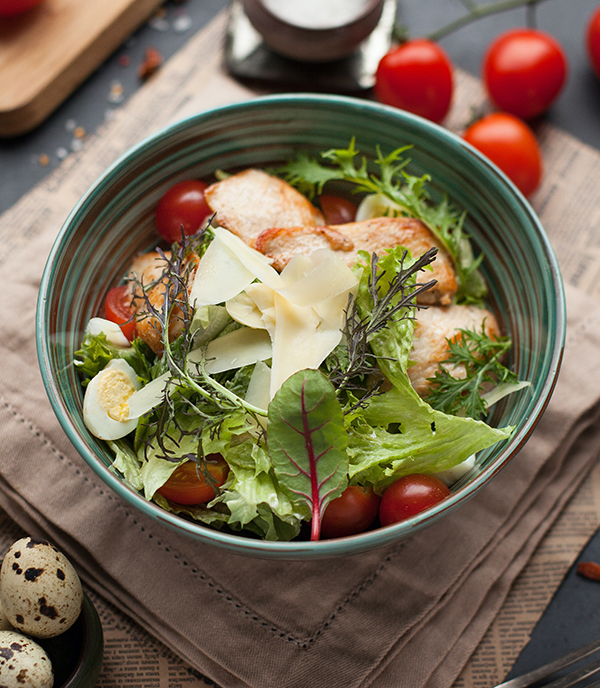
20 salad recipes for lunch
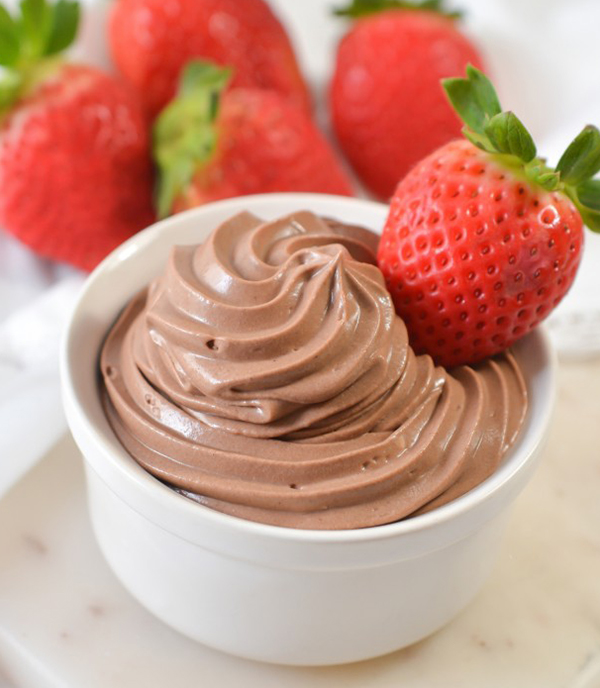
easy chocolate mousse
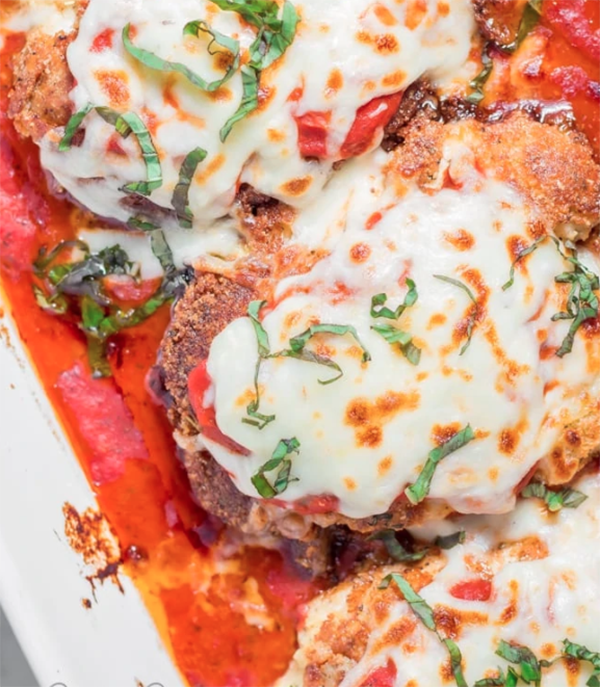
Italian chicken Parmesan
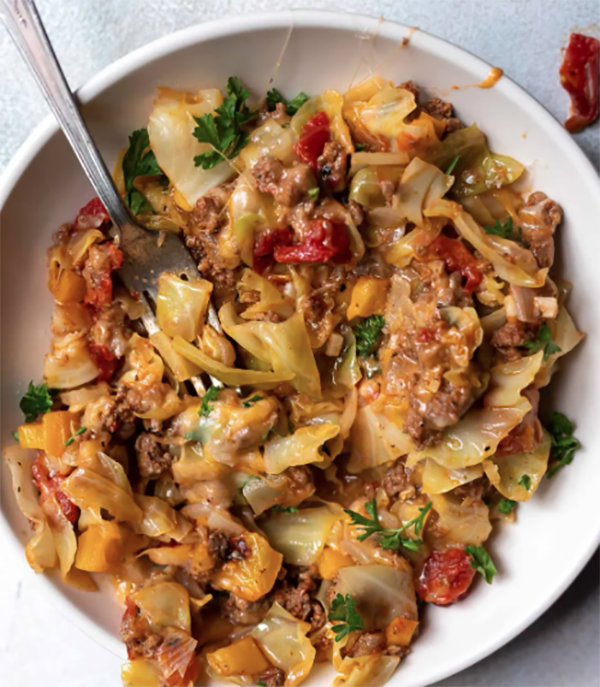
cabbage casserole
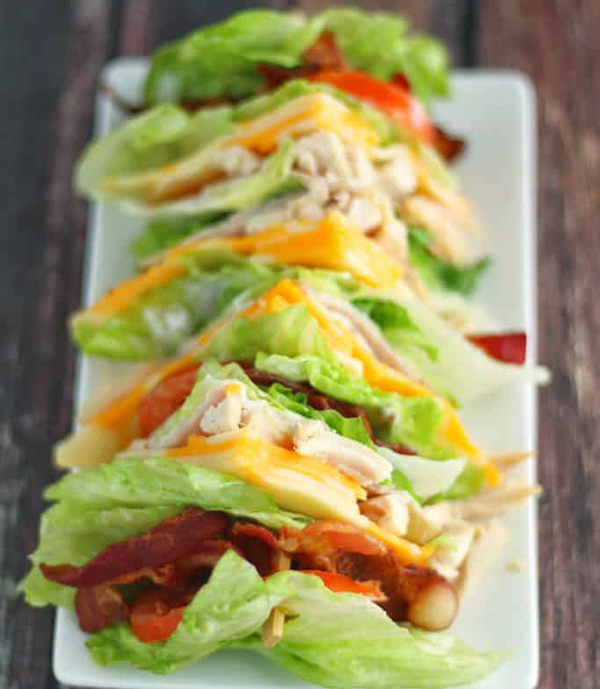
chicken club sandwiches
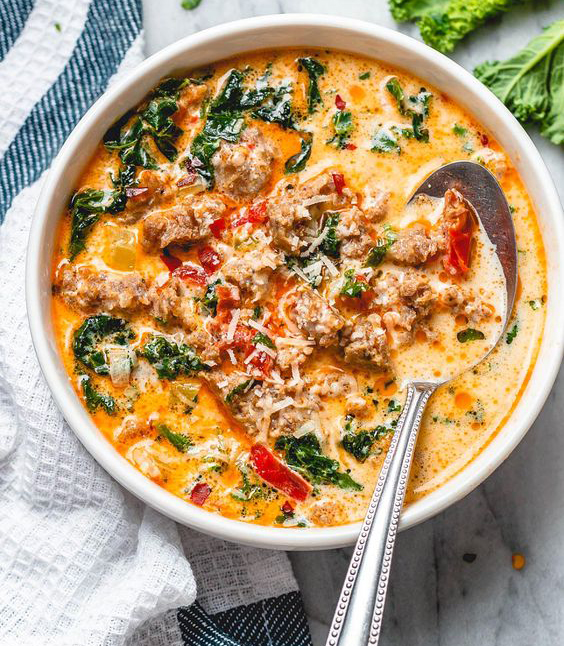
Tuscan Soup
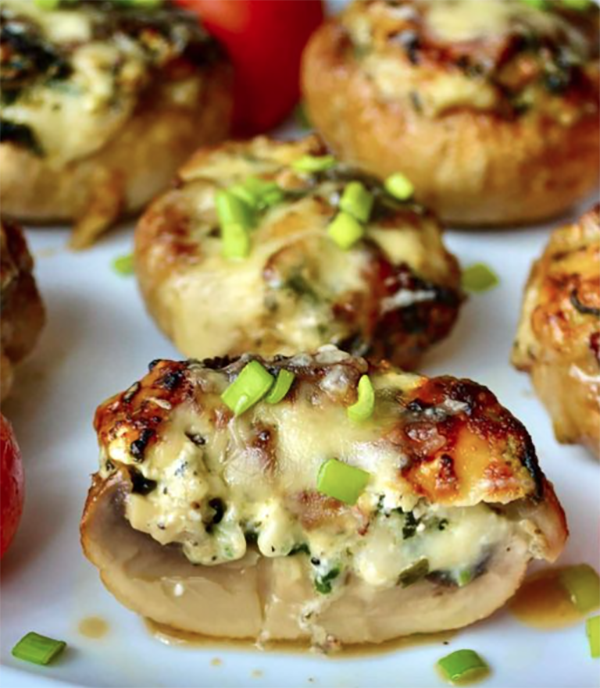
40 air-fryer recipes
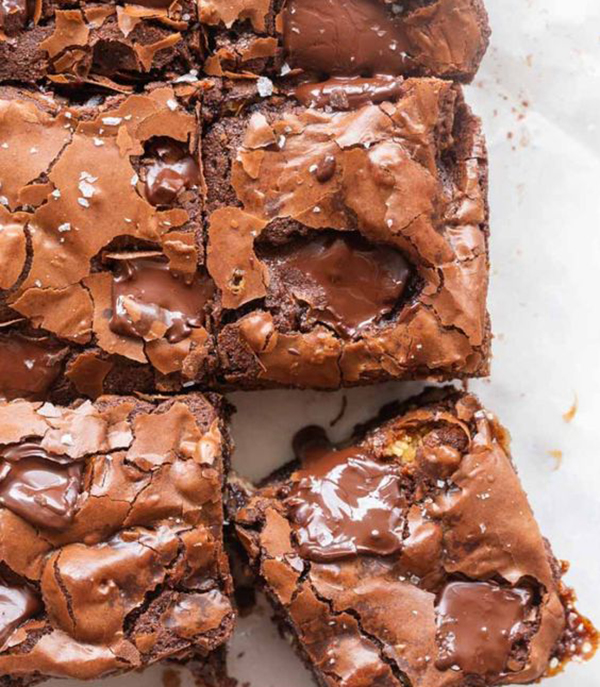
brownies
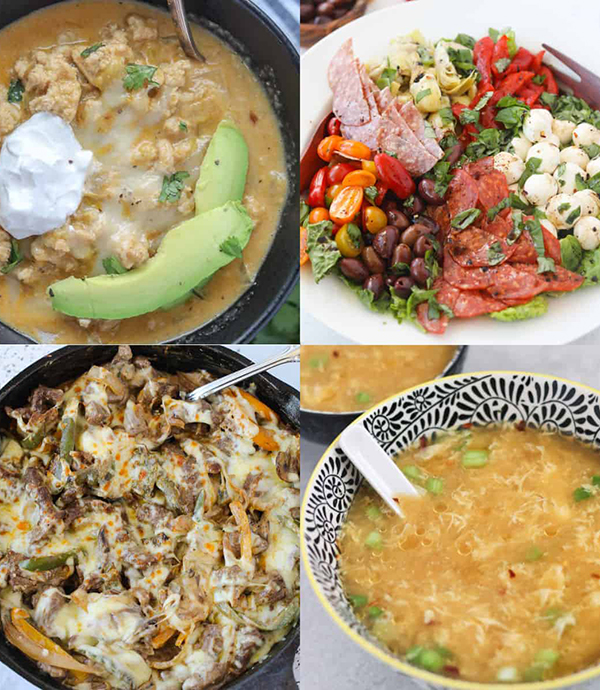
27 easy beginners meals
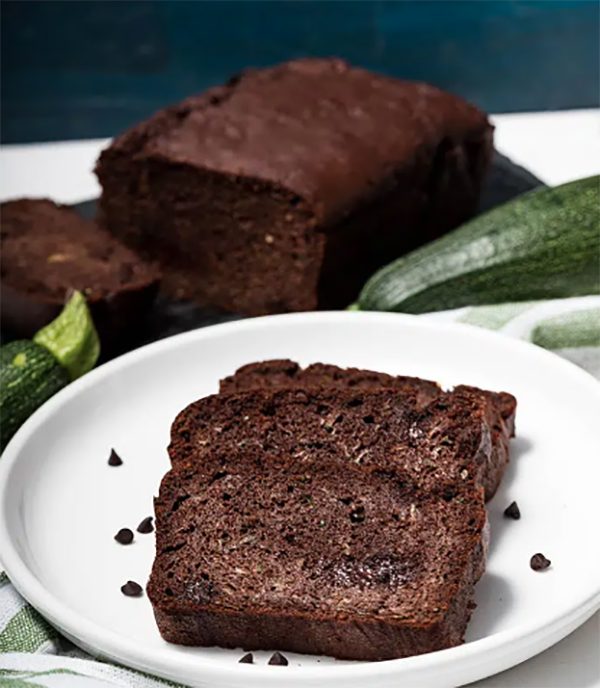
chocolate zucchini bread
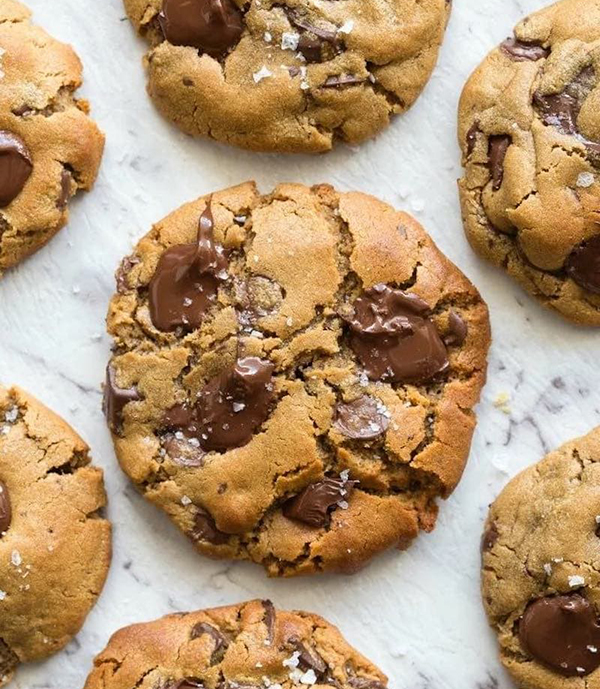
almond butter cookies
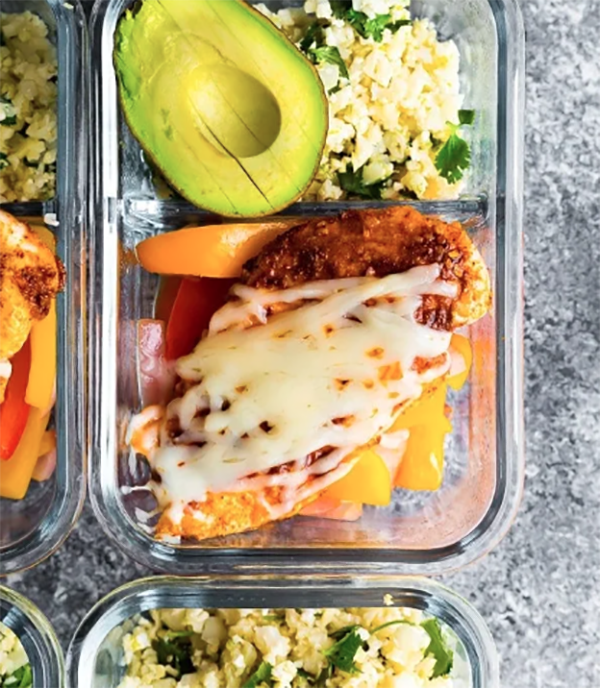
20 lunch ideas for work
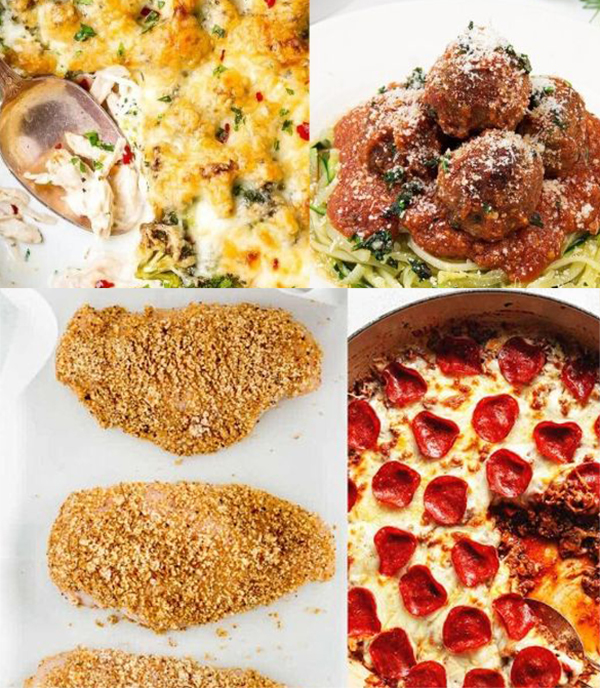
25 cheap budget meals

no-bake cookies
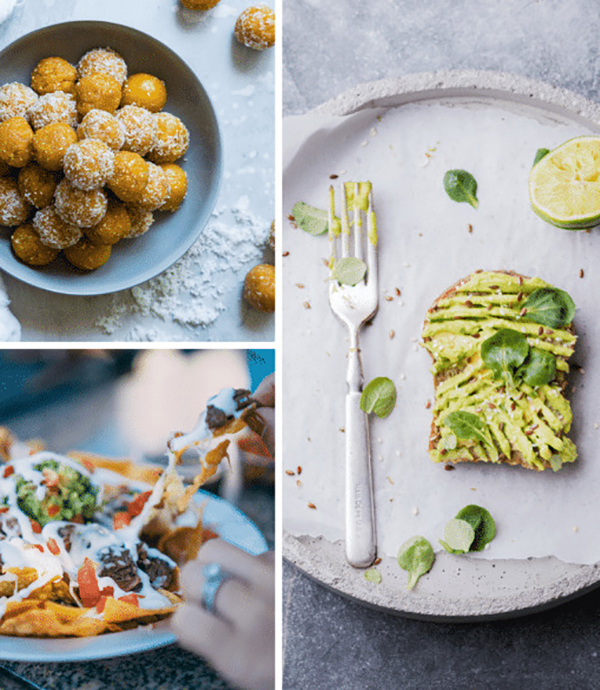
25 quick snack ideas
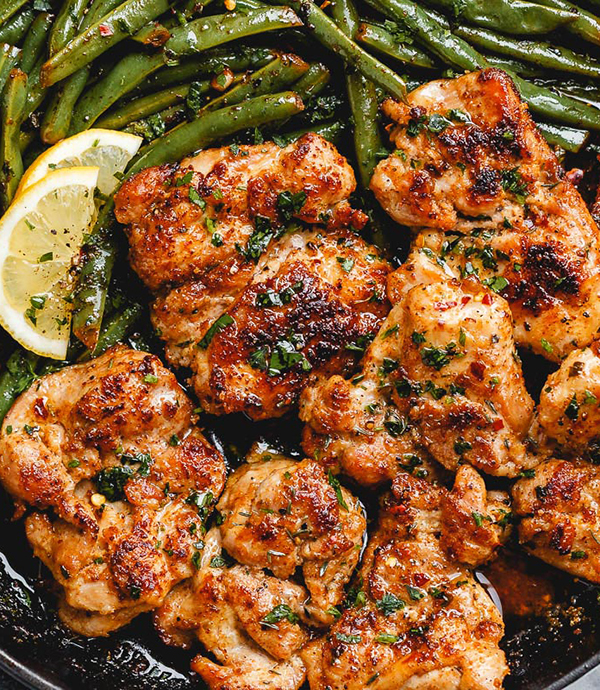
lemon garlic butter chicken & green beans skillet
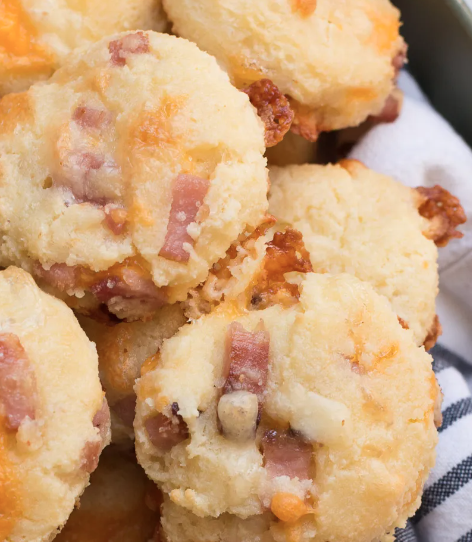
ham & cheese breakfast biscuits
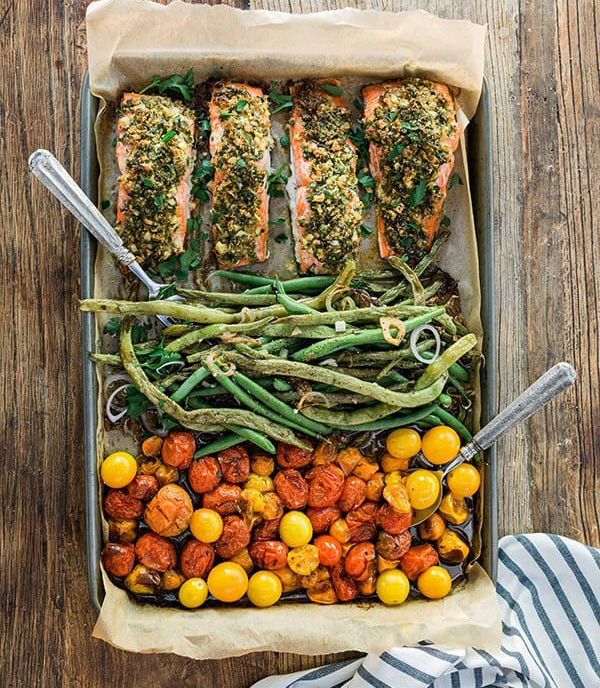
9 no fuss sheet pan dinners
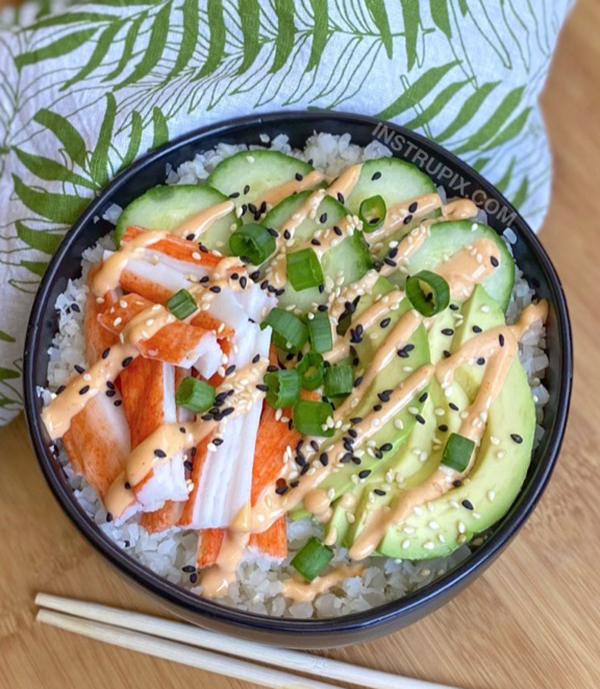
cauli-rice bowl sushi
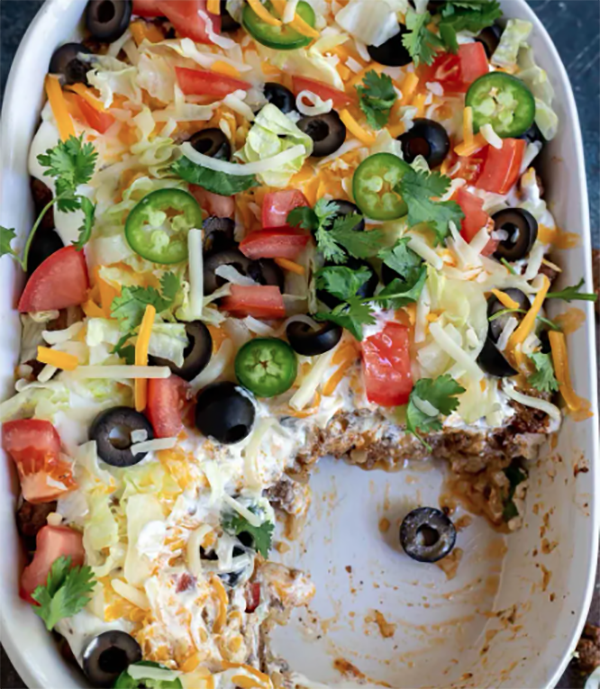
taco casserole
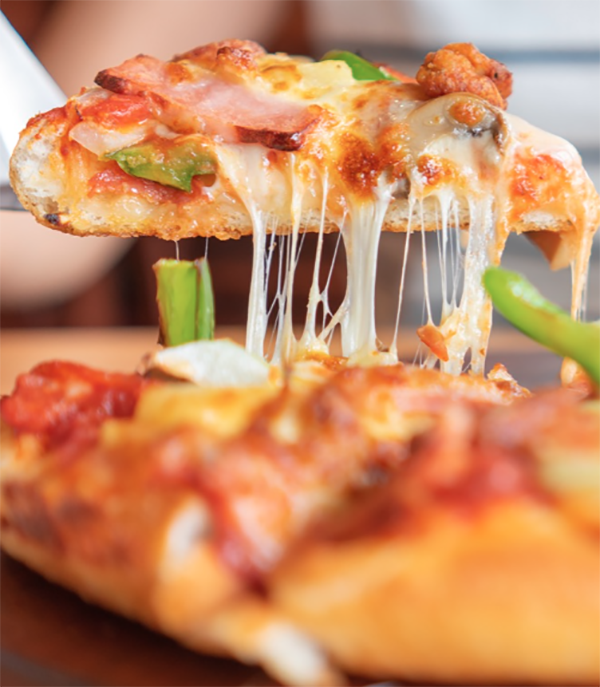
flathead pizza crust
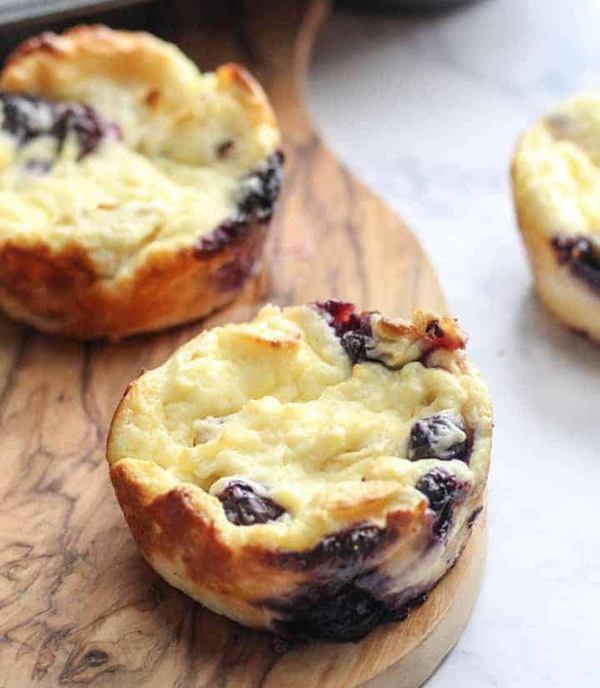
blueberry cream cheese muffins

21 fat bomb recipes
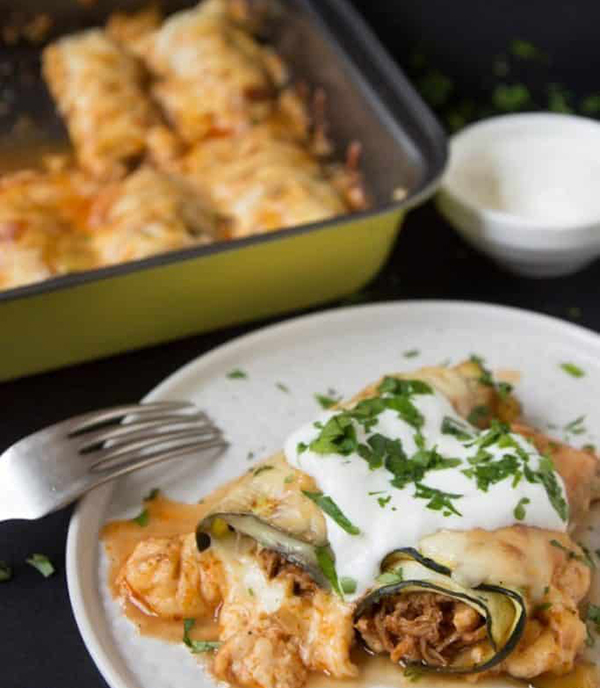
zucchini chicken enchiladas
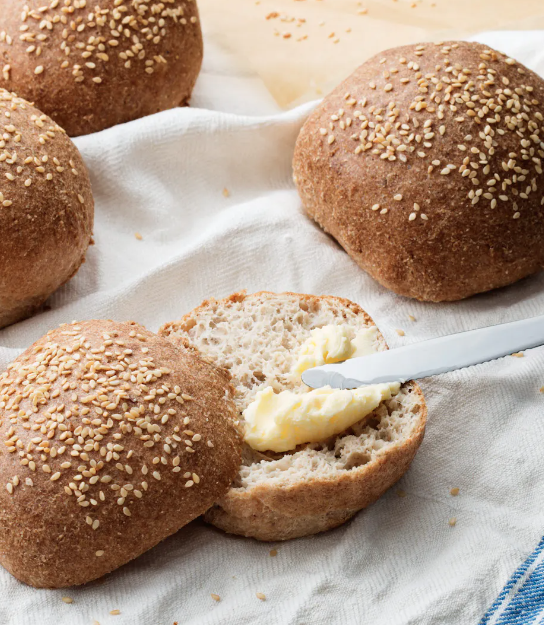
bread
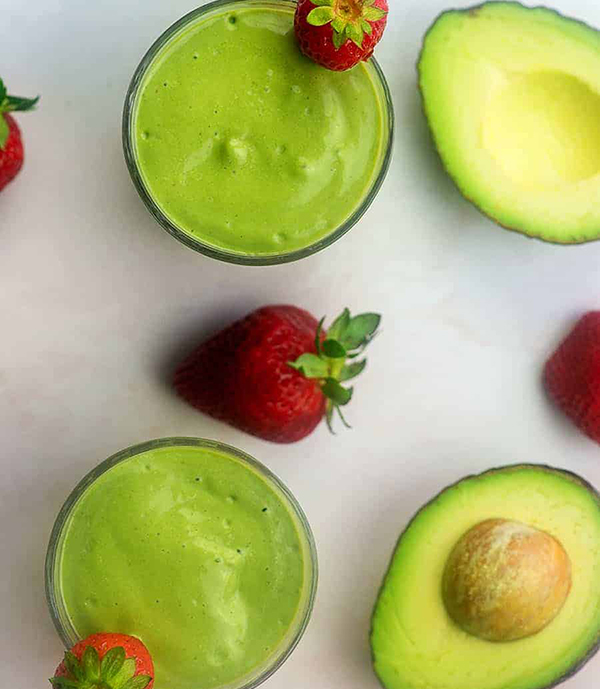
green smoothie
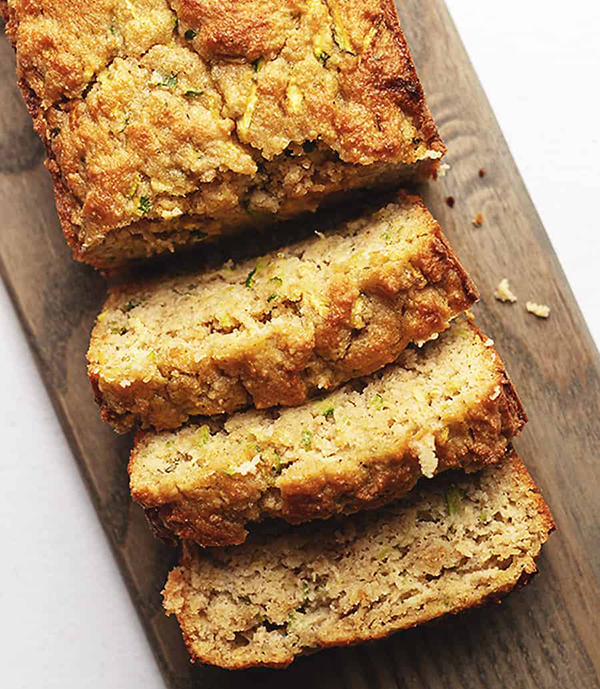
zucchini bread
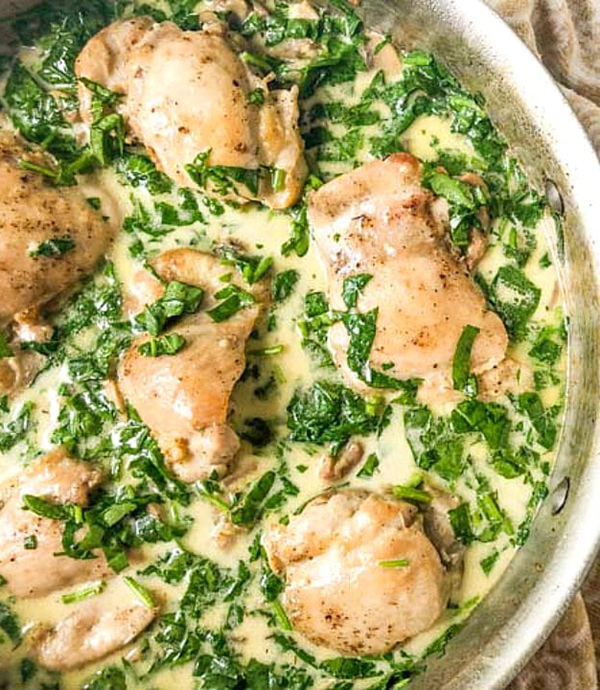
chicken in creamy spinach & mushroom sauce

41+ chaffle recipes
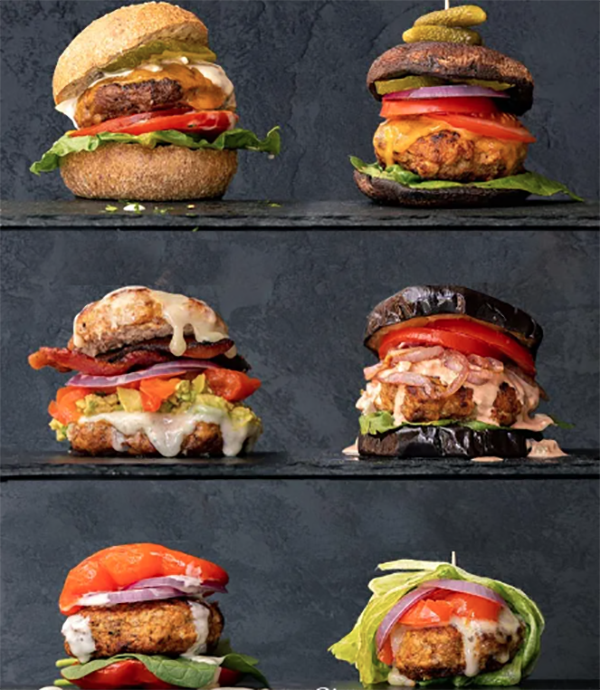
burgers (6 ways)
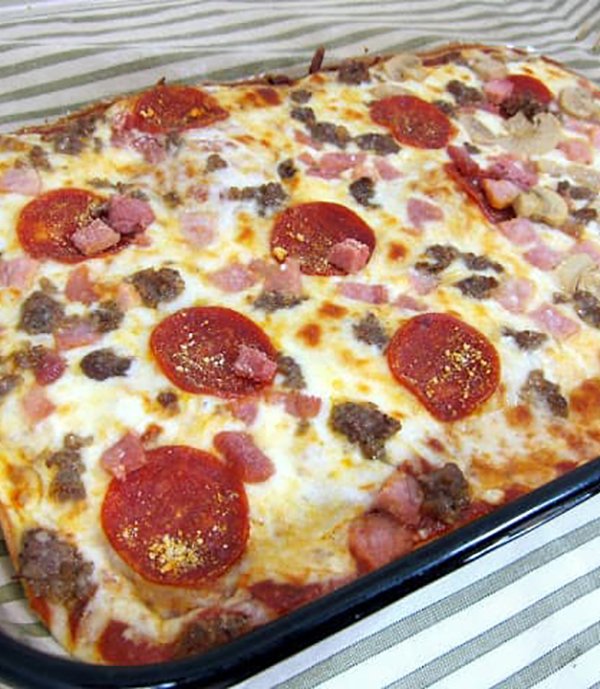
crustless pizza
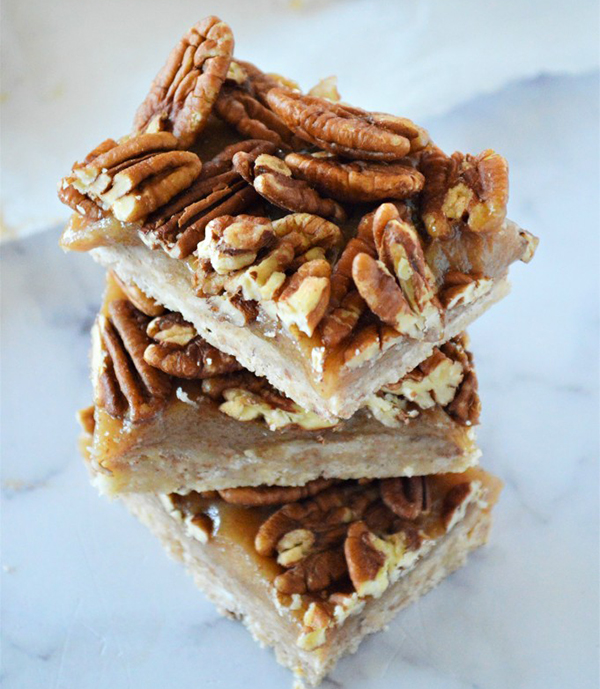
no-bake pecan bars
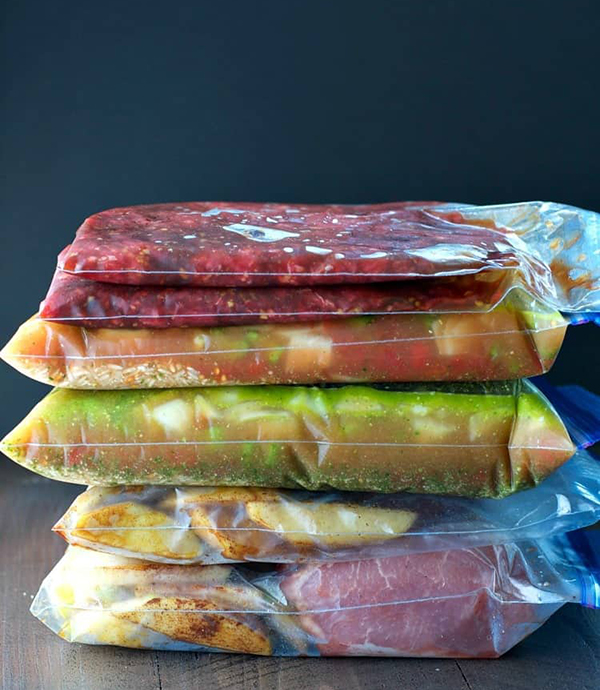
make-ahead freezer meals
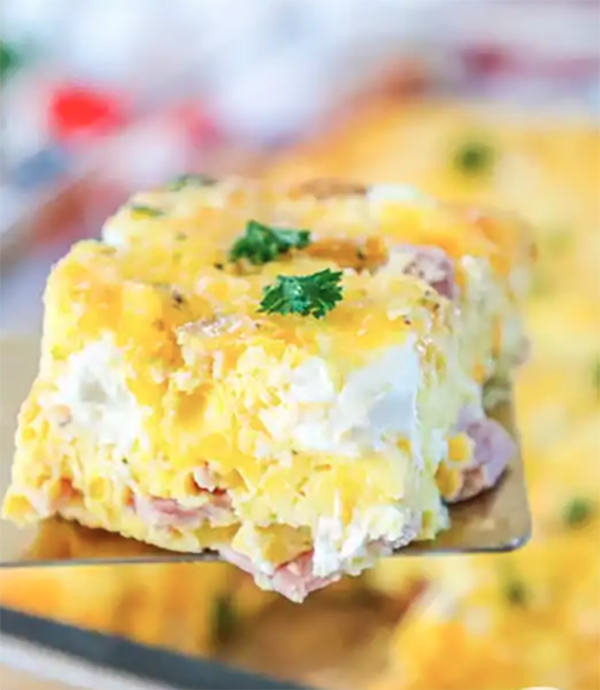
ham & cheese breakfast casserole
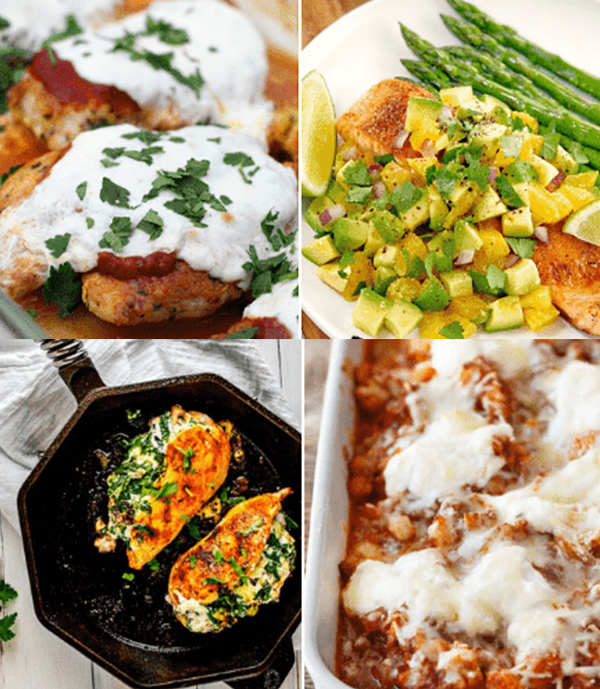
30+ dinners for busy days
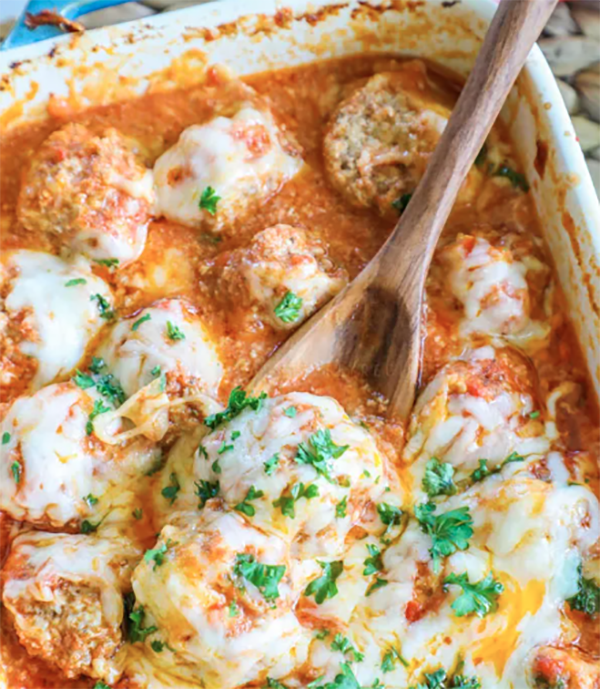
baked meatballs
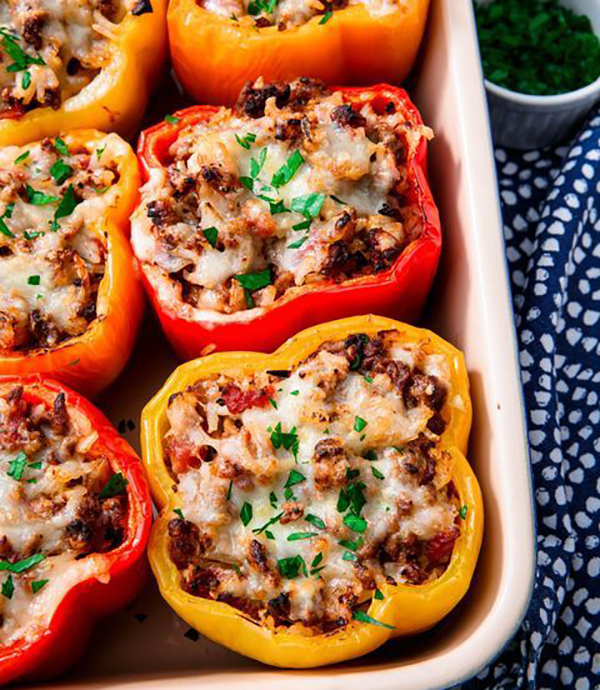
stuffed peppers
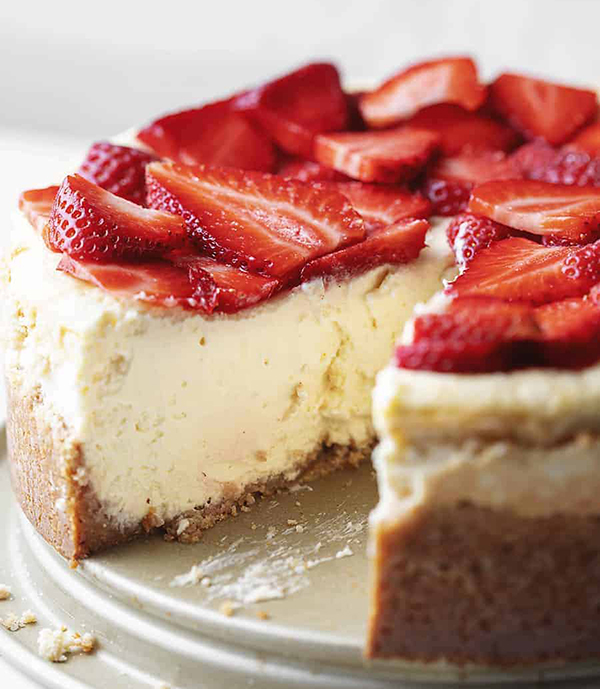
cheesecake
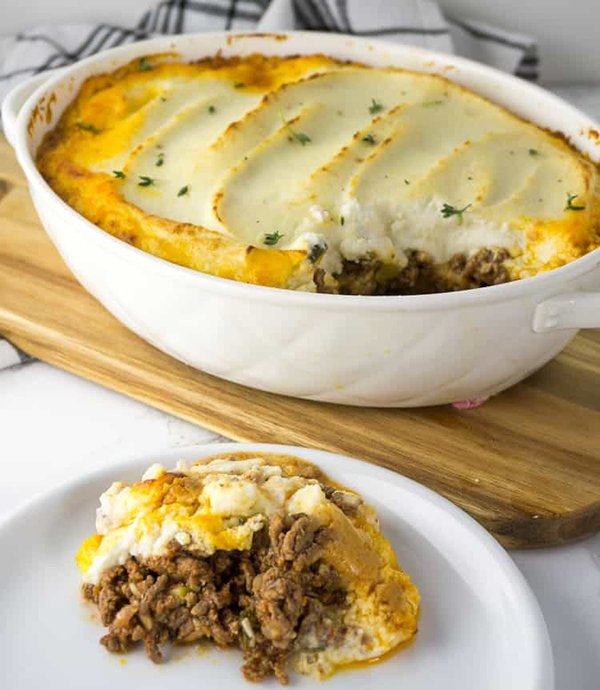
sheperd's pie with cauliflower top
